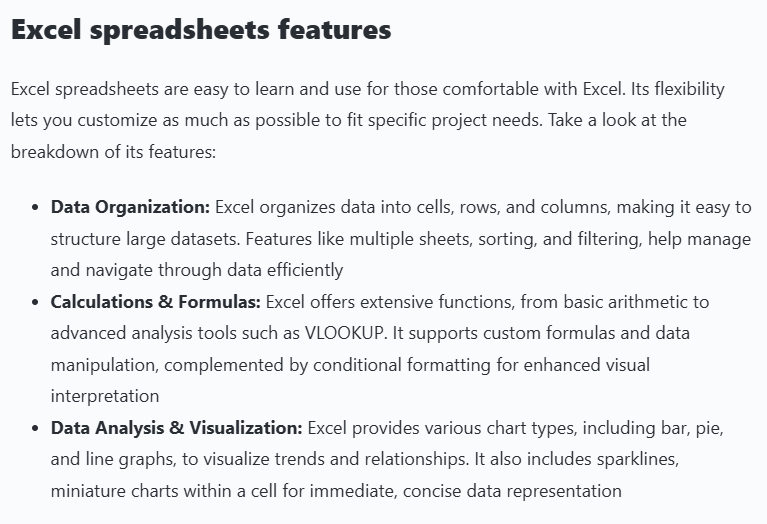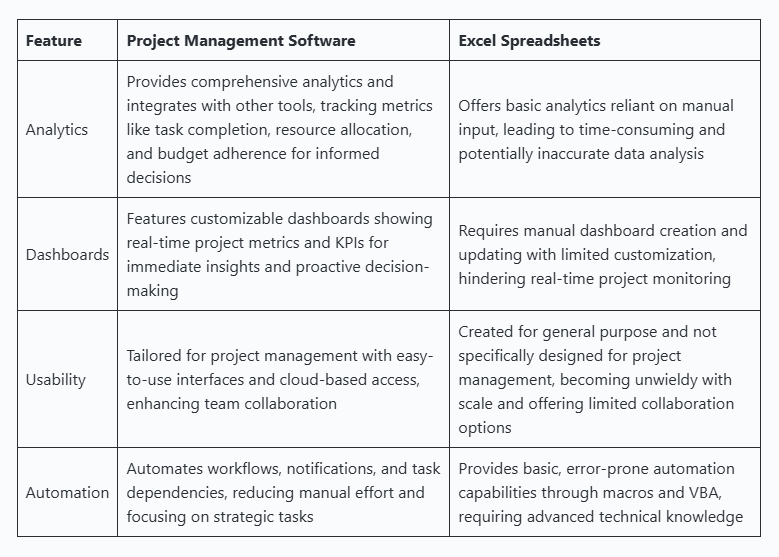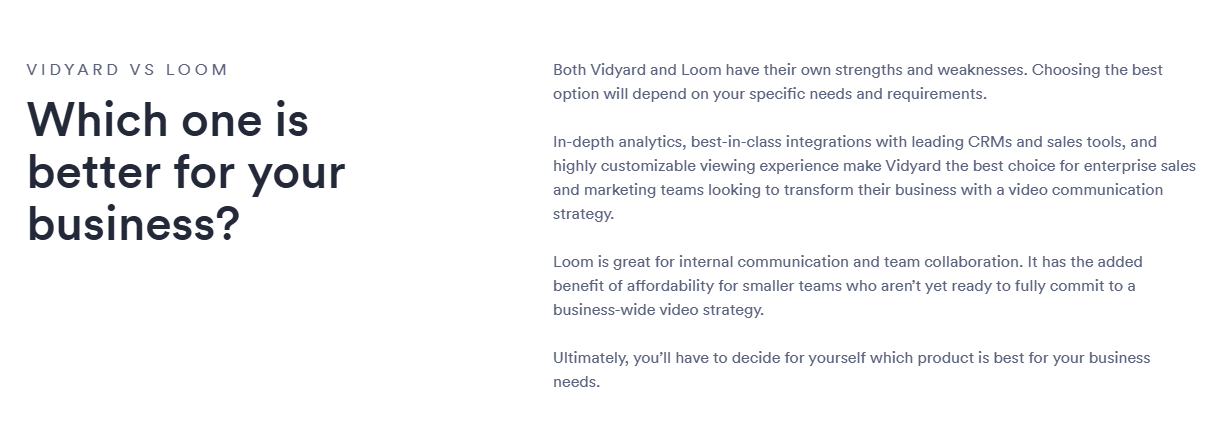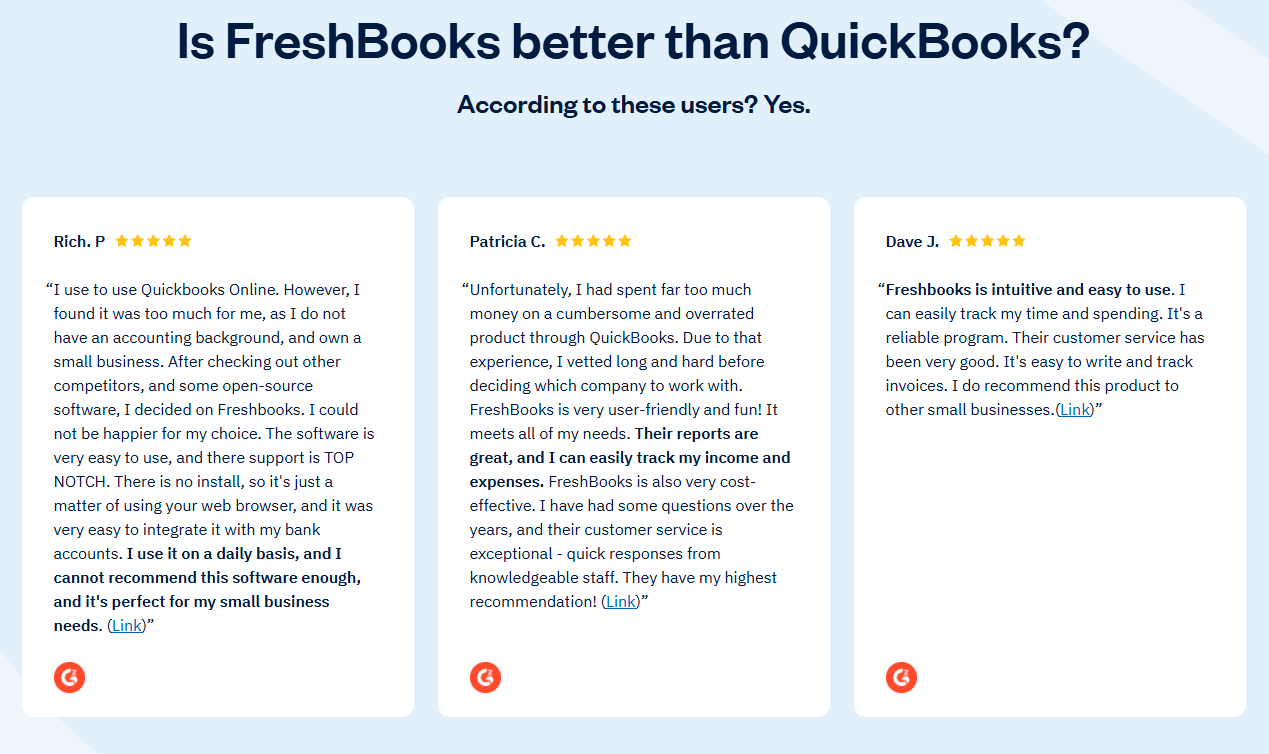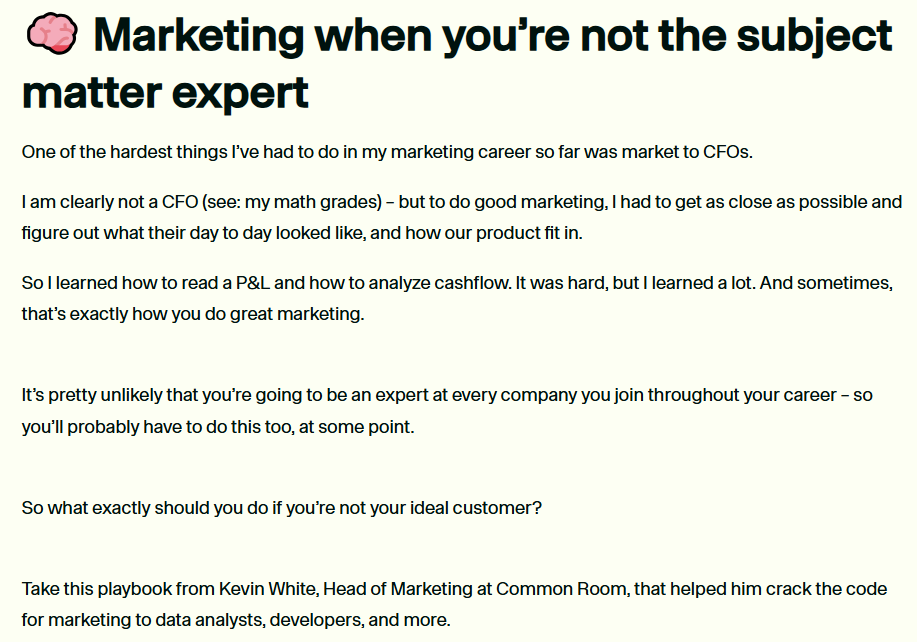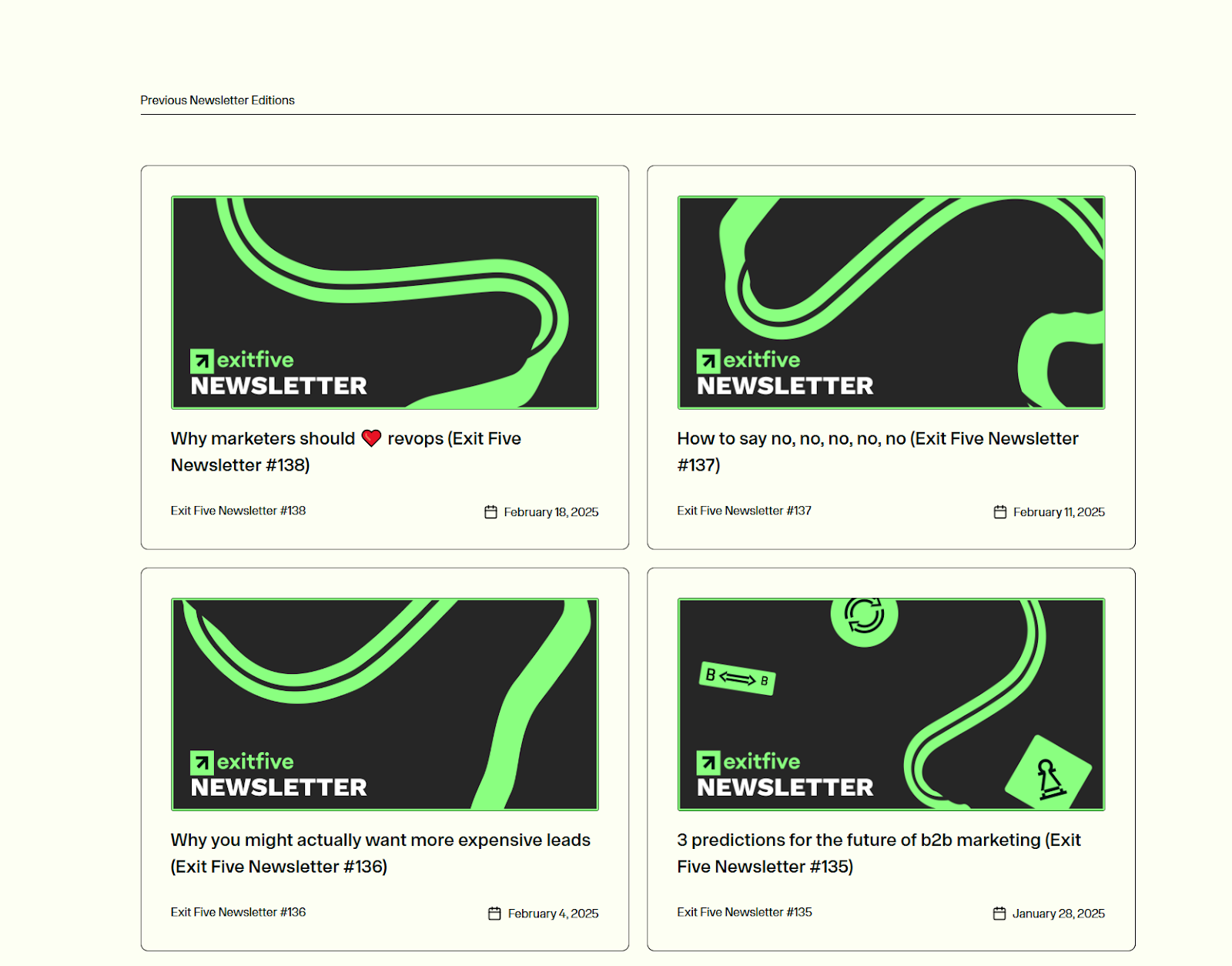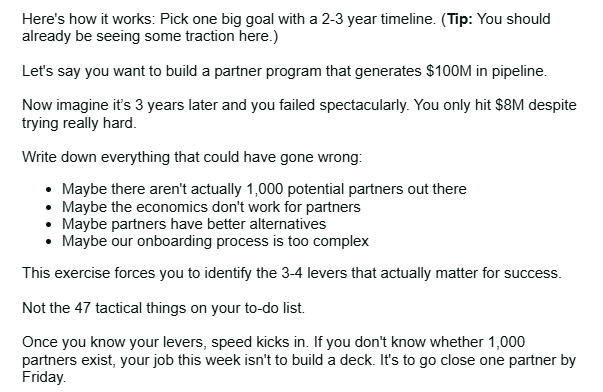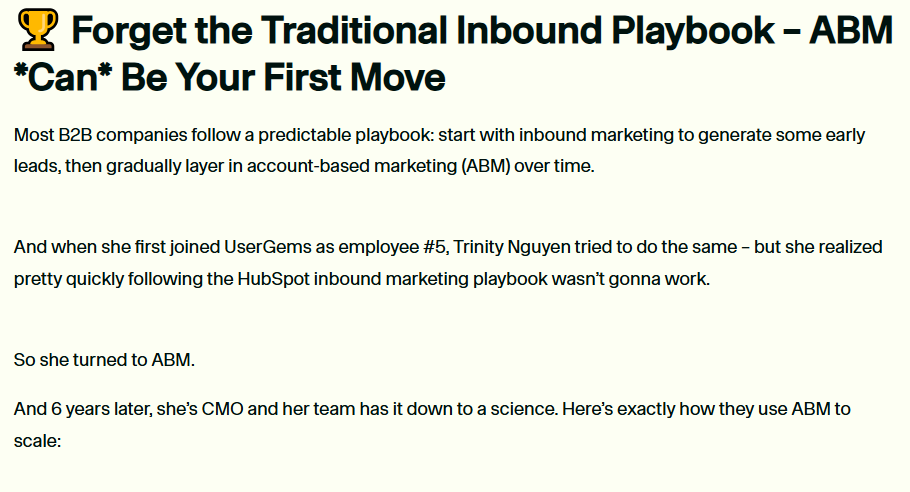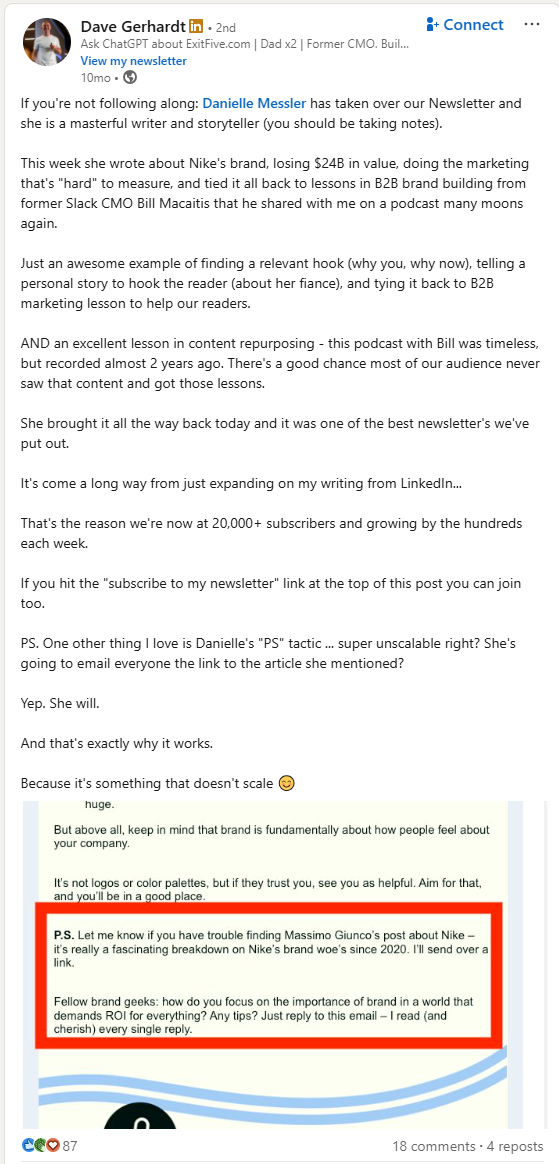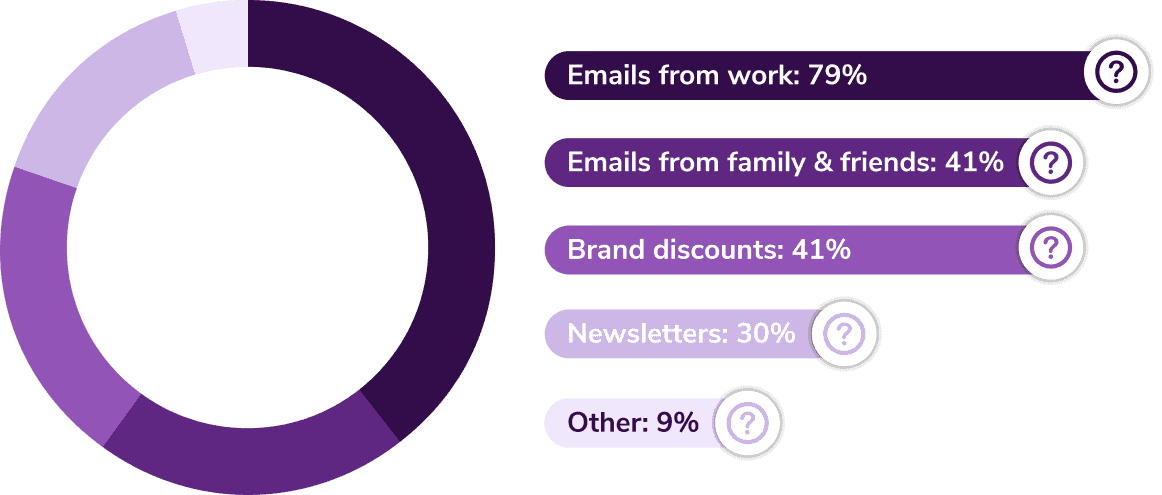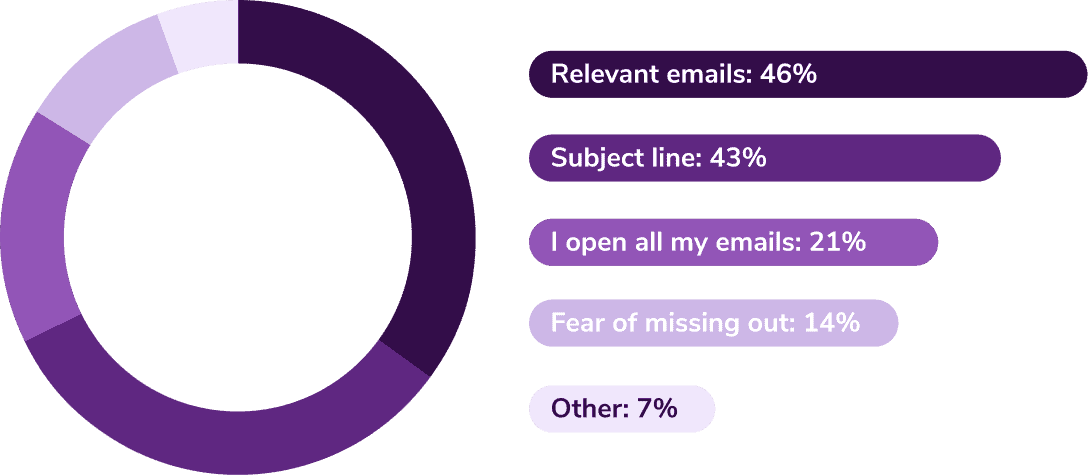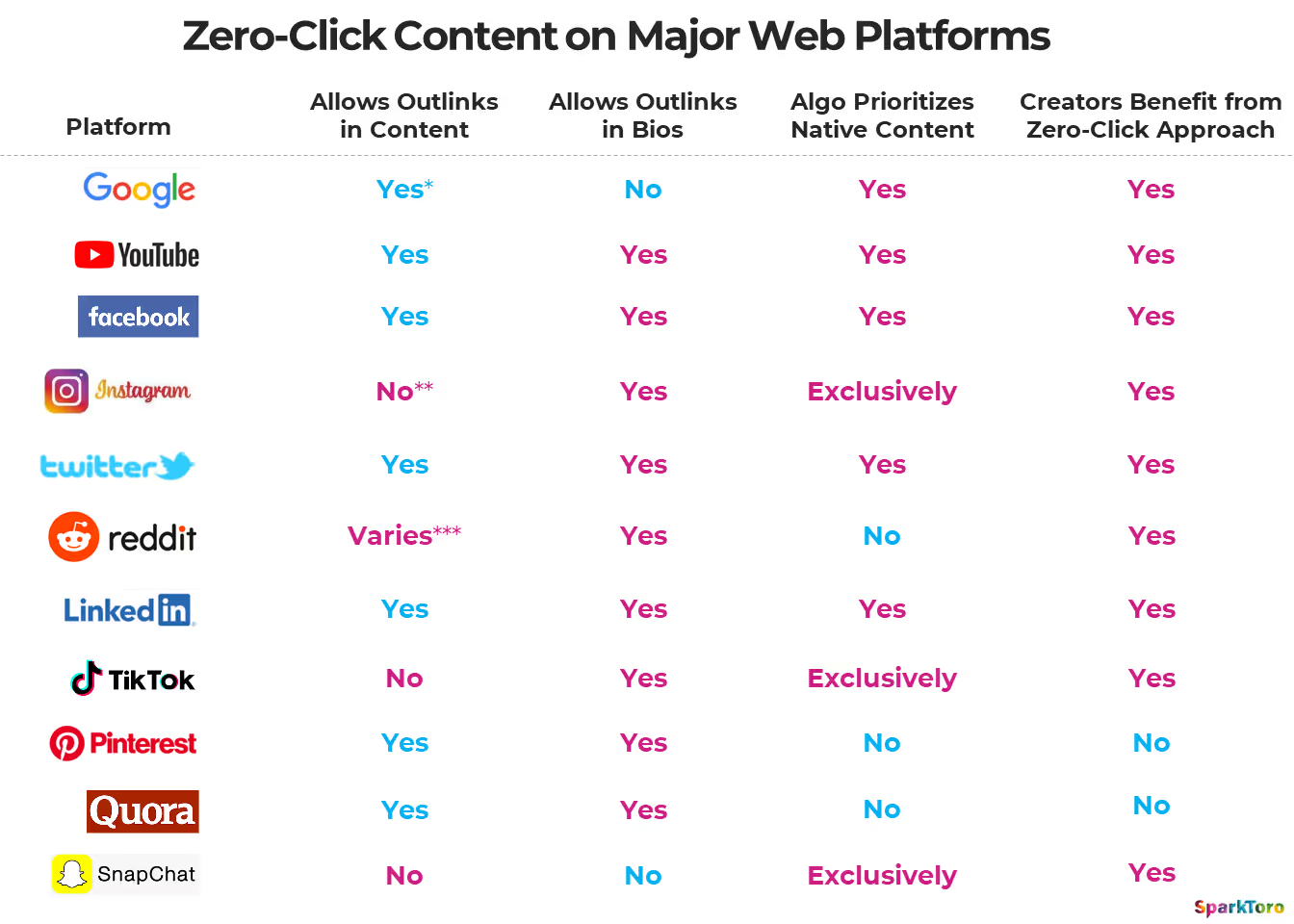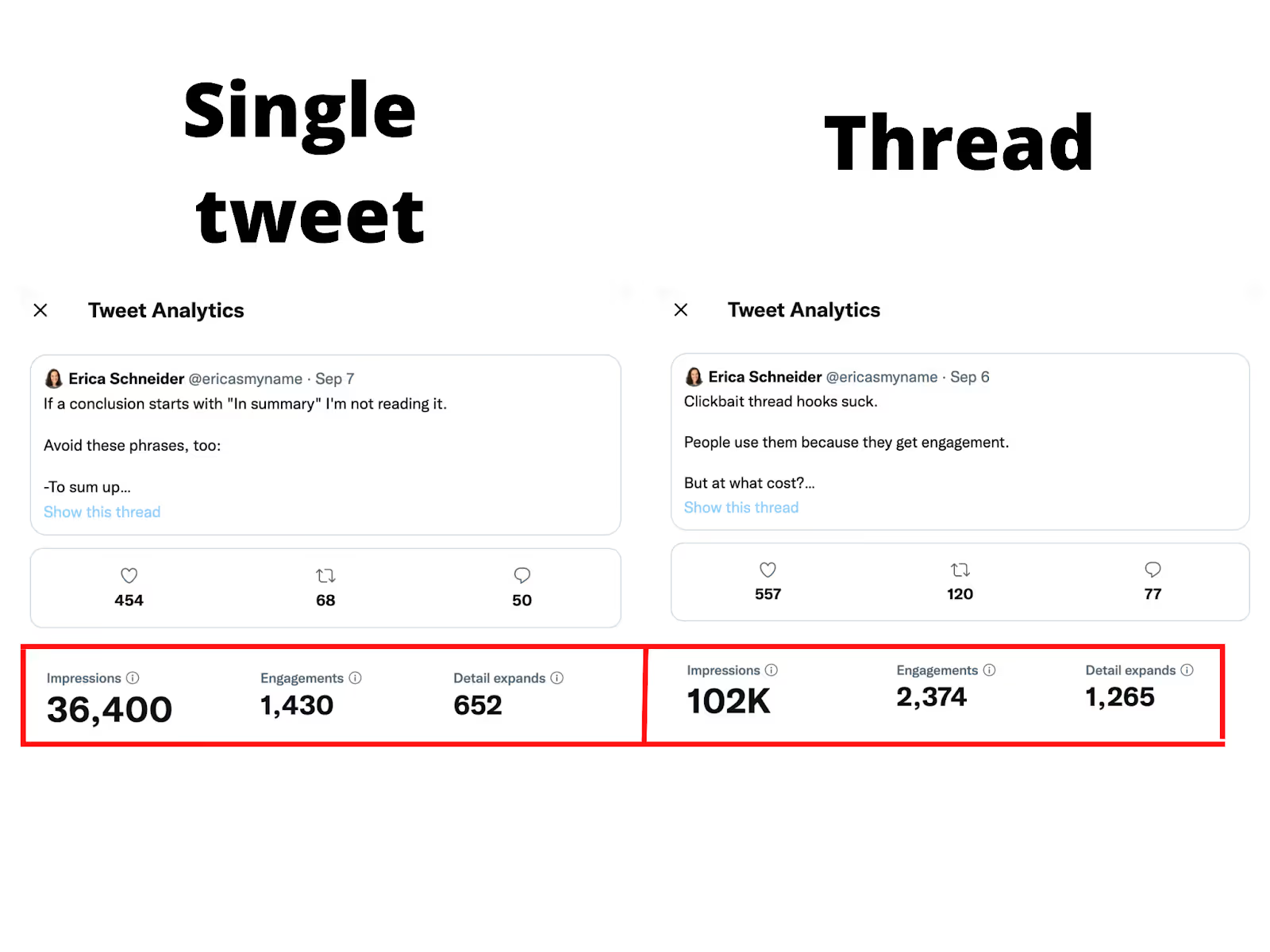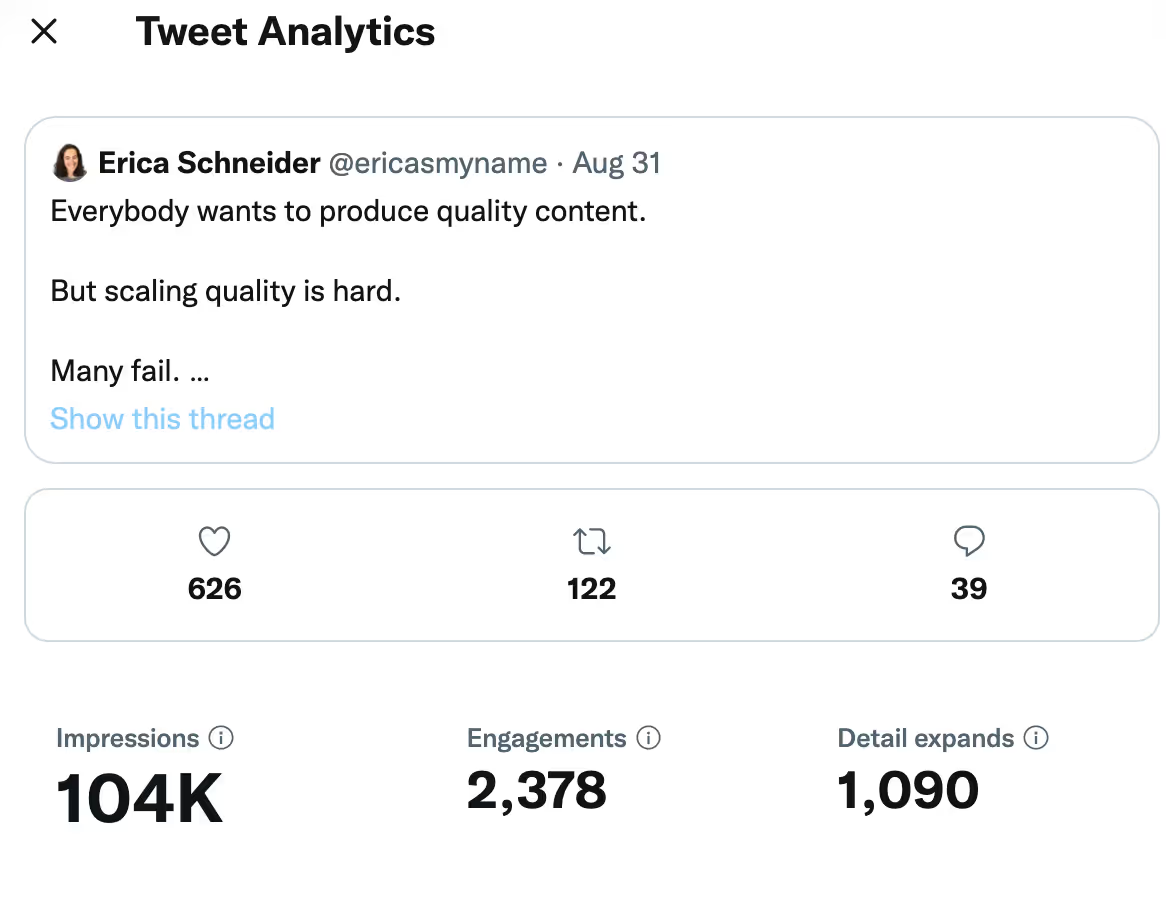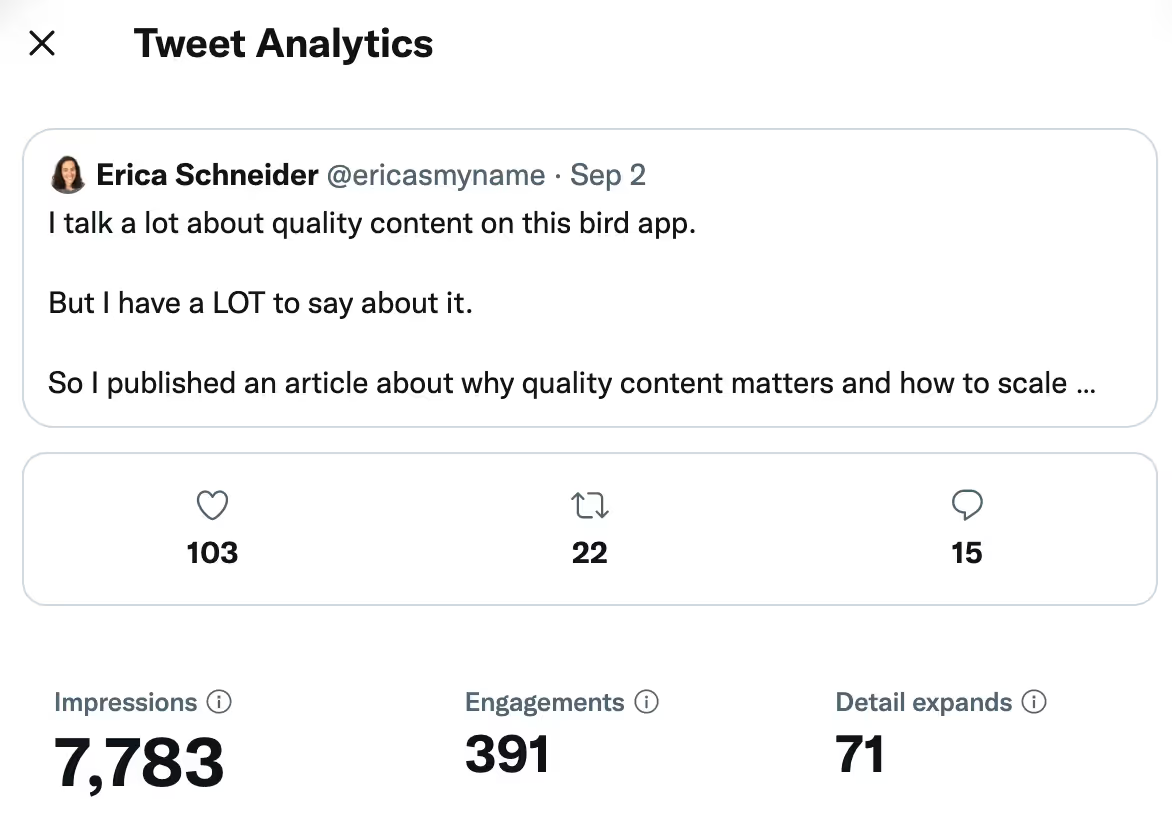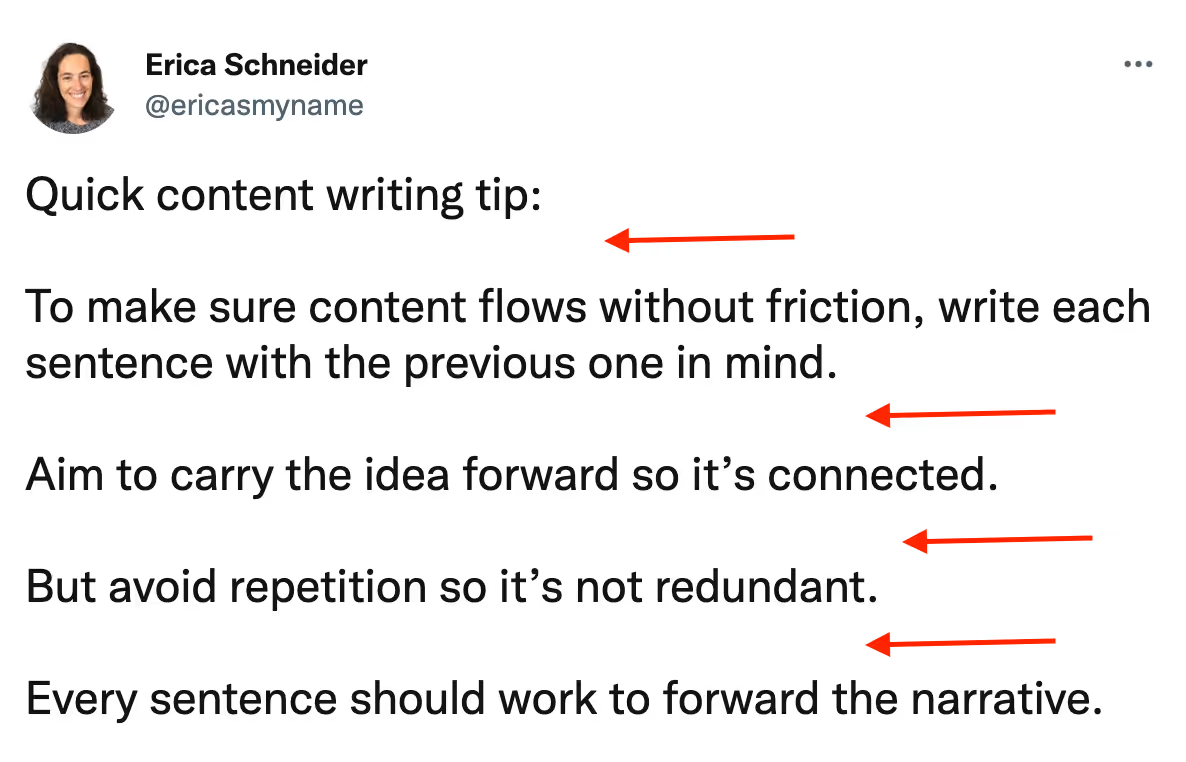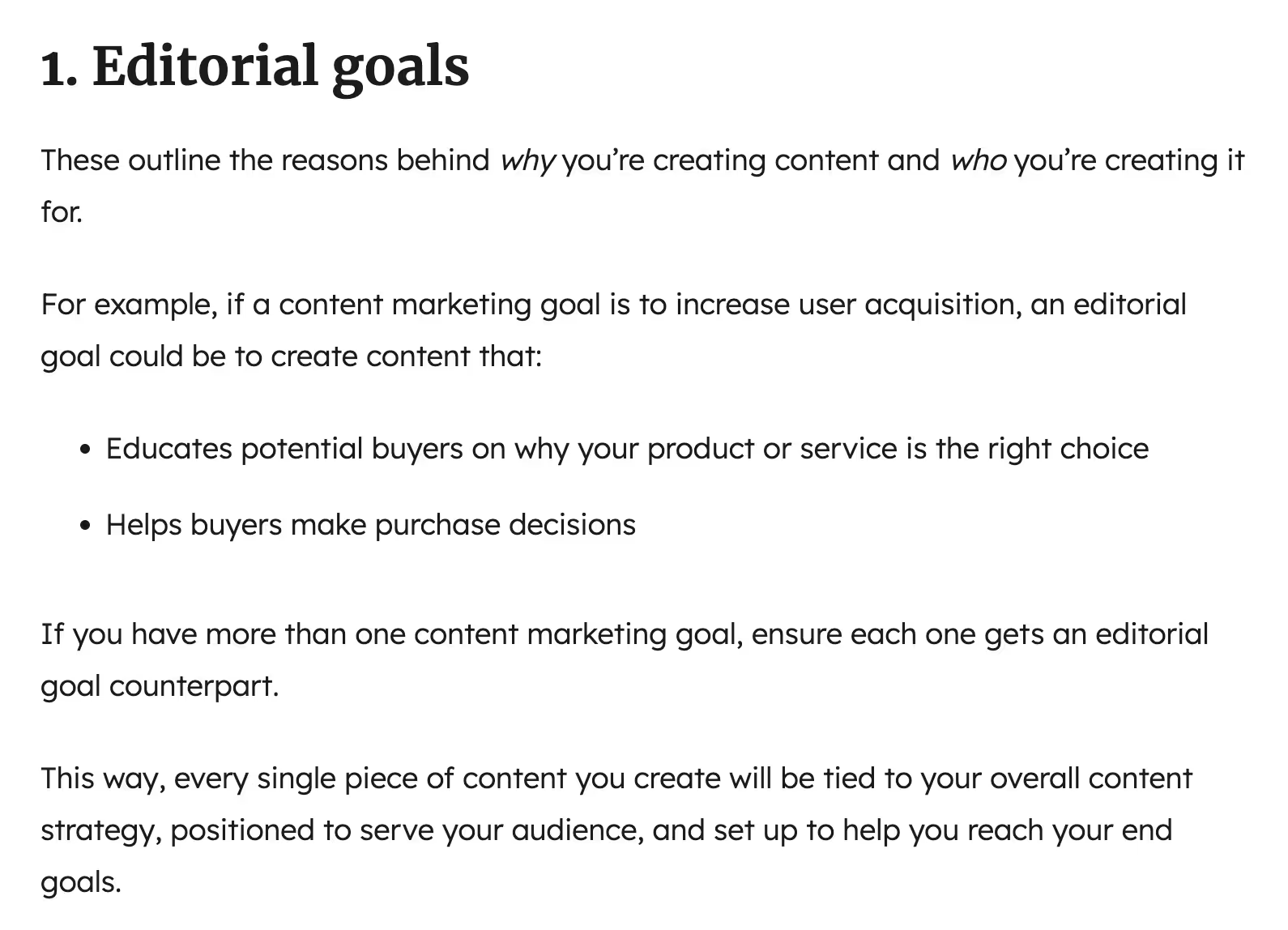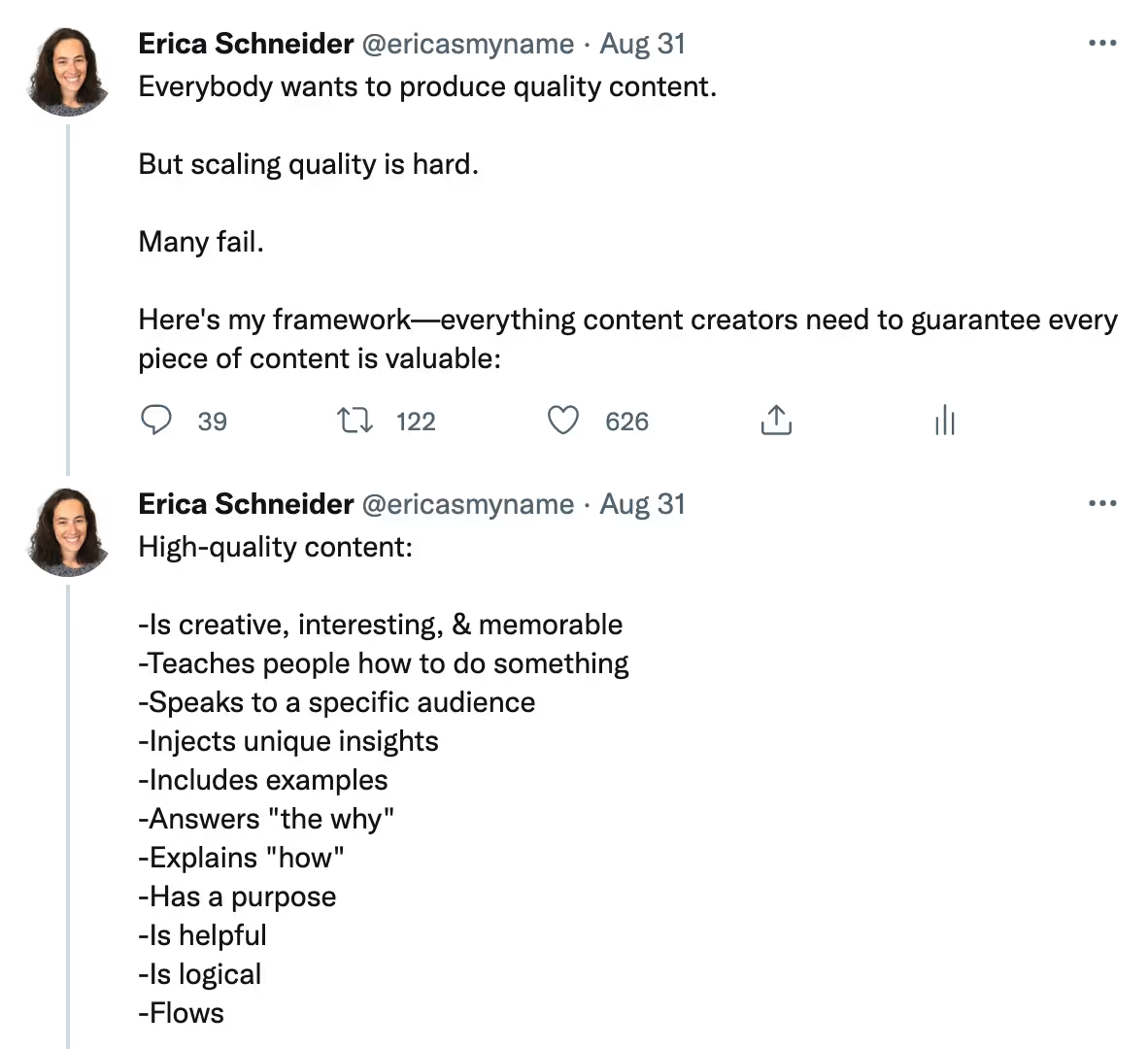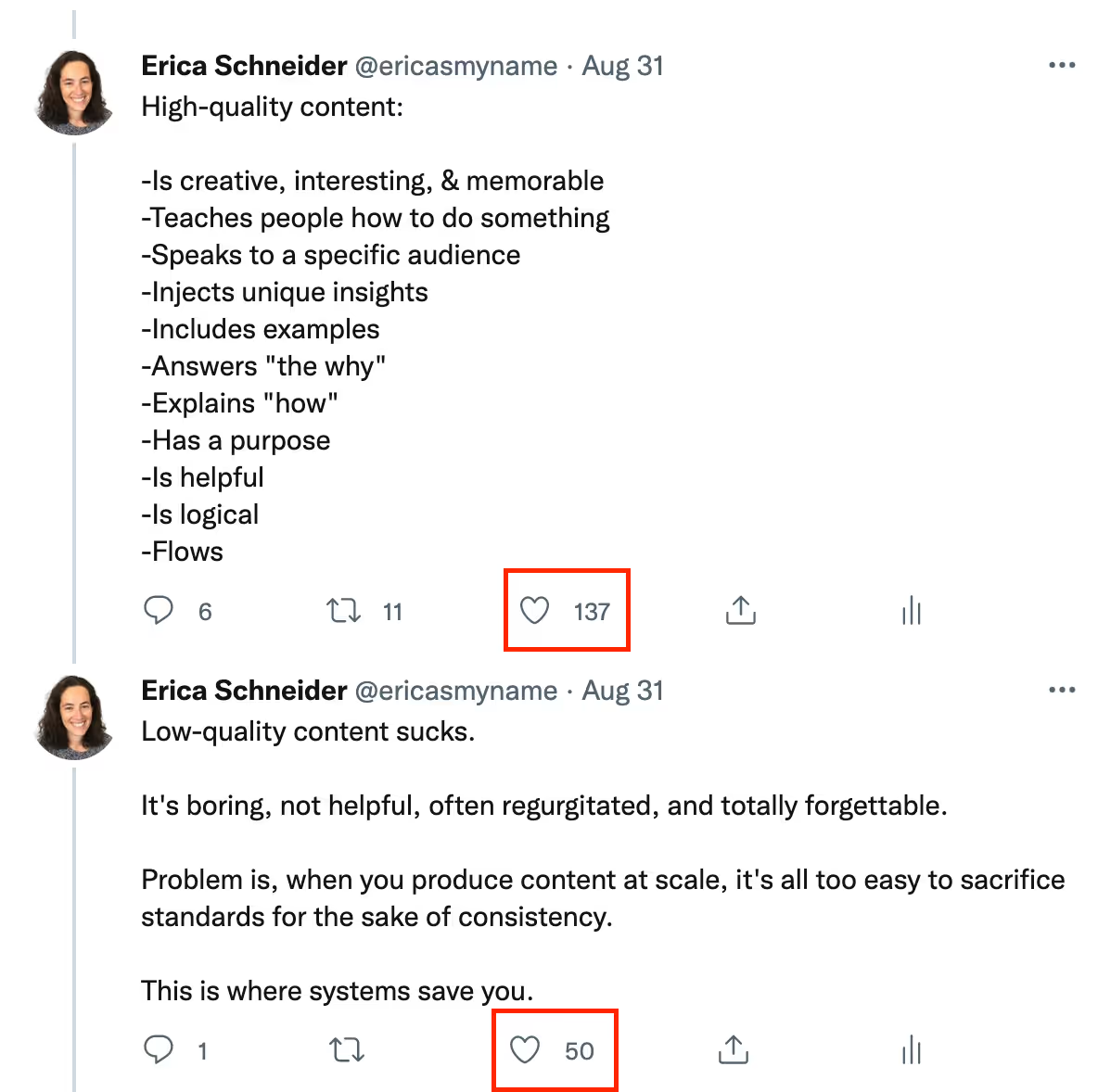What is bottom-of-funnel (BOFU) content?
Bottom-of-funnel (BOFU) content helps your audience research products and solutions. It’s designed to educate buyers that your product is the best option and overcome objections.
While BOFU is designed to convert, it must still add value to readers.
Common bottom-of-funnel content formats include:
- Comparison pages
- Product listicles
- Case studies
- Explainer videos
Content at this stage of the funnel:
- Eases prospects past their objections and builds enough trust to take action (e.g. book a demo or sign up for a trial)
- Gives solution-aware prospects the information they need for product research
Top-of-funnel (TOFU) and middle-of-funnel (MOFU) content have slightly different goals. They build awareness and capture users early in the customer journey.
BOFU content directly contributes to customer acquisition.
For example, here’s a BOFU article we created for Pipedrive. It teaches their audience how to create client reports—a common jobs-to-be-done (JTBD):

It offers practical advice and tips on what to include in client reports. More importantly, it walks readers through creating them using Pipedrive’s reporting features.
We call this product-led content, which adds value and teaches users how to solve relevant problems with your product:
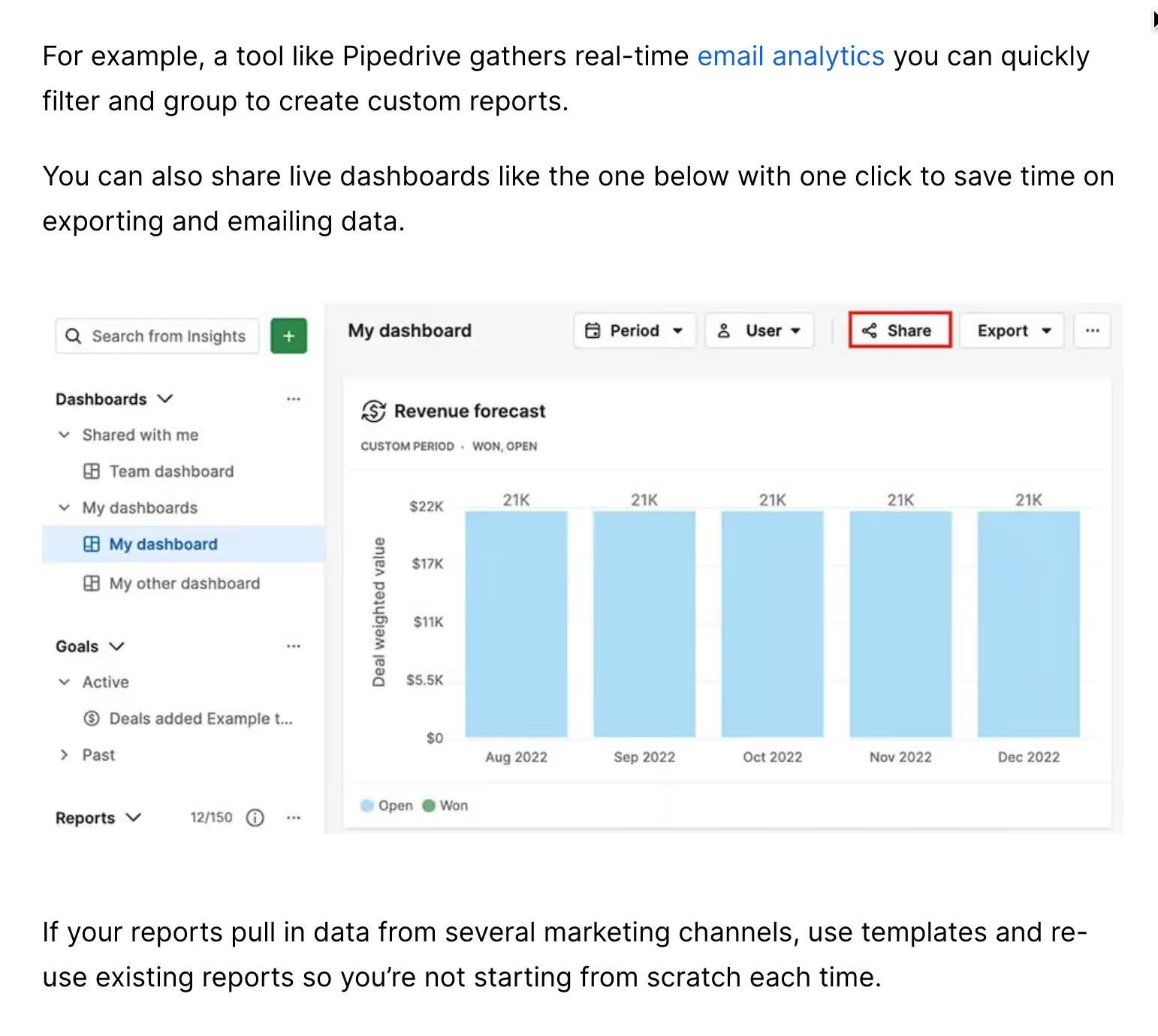
Further down the funnel, you can create product content to attract in-market buyers.
Like this article we wrote for HiringBranch listing the best candidate assessment tools:
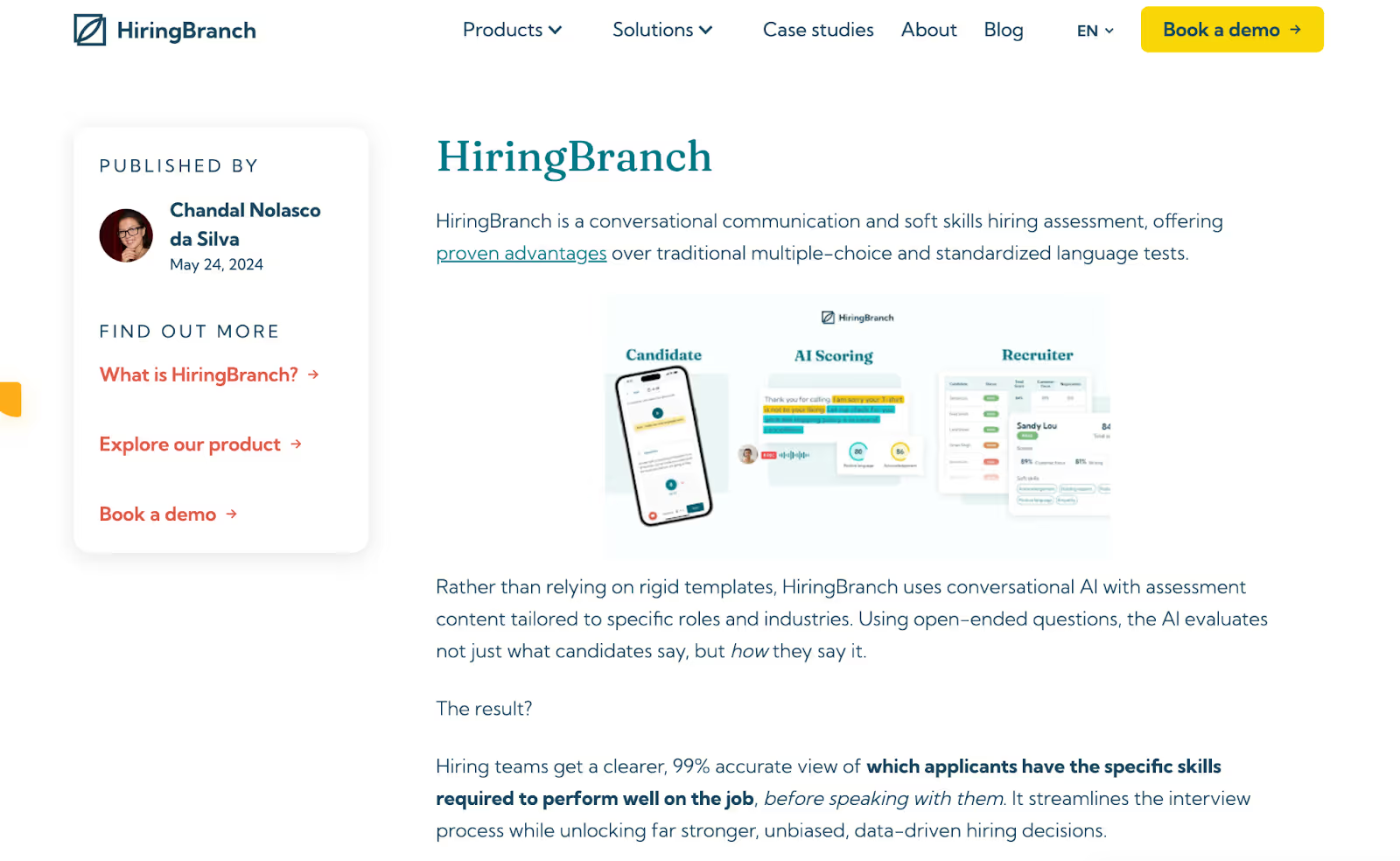
This piece of BOFU content:
- Gets HiringBranch’s product in front of searchers looking for their product
- Adds huge amounts of value for readers researching their options
- Includes a relevant CTA to sign up for a demo
Both top- and bottom-of-funnel content have their place in the marketing mix.
For B2B and SaaS startups getting started with content and SEO, it’s best to focus on the latter.
Why? Because revenue and growth are your core priorities. BOFU content gets you in front of the buyers who are looking for your product right now.
[[component]]
How to find bottom-of-funnel content topic ideas
To find the right BOFU content ideas, you need to understand why customers buy from you.
- Not just: “Our customers need an invoicing tool.”
- But more like: “Our customers want to send invoices and reminders on mobile devices. They don’t want to chase clients to get paid.”
“Mobile invoices and reminders” is the what. “Not having to chase clients” is the why.
Which is exactly what this Tide article covers:
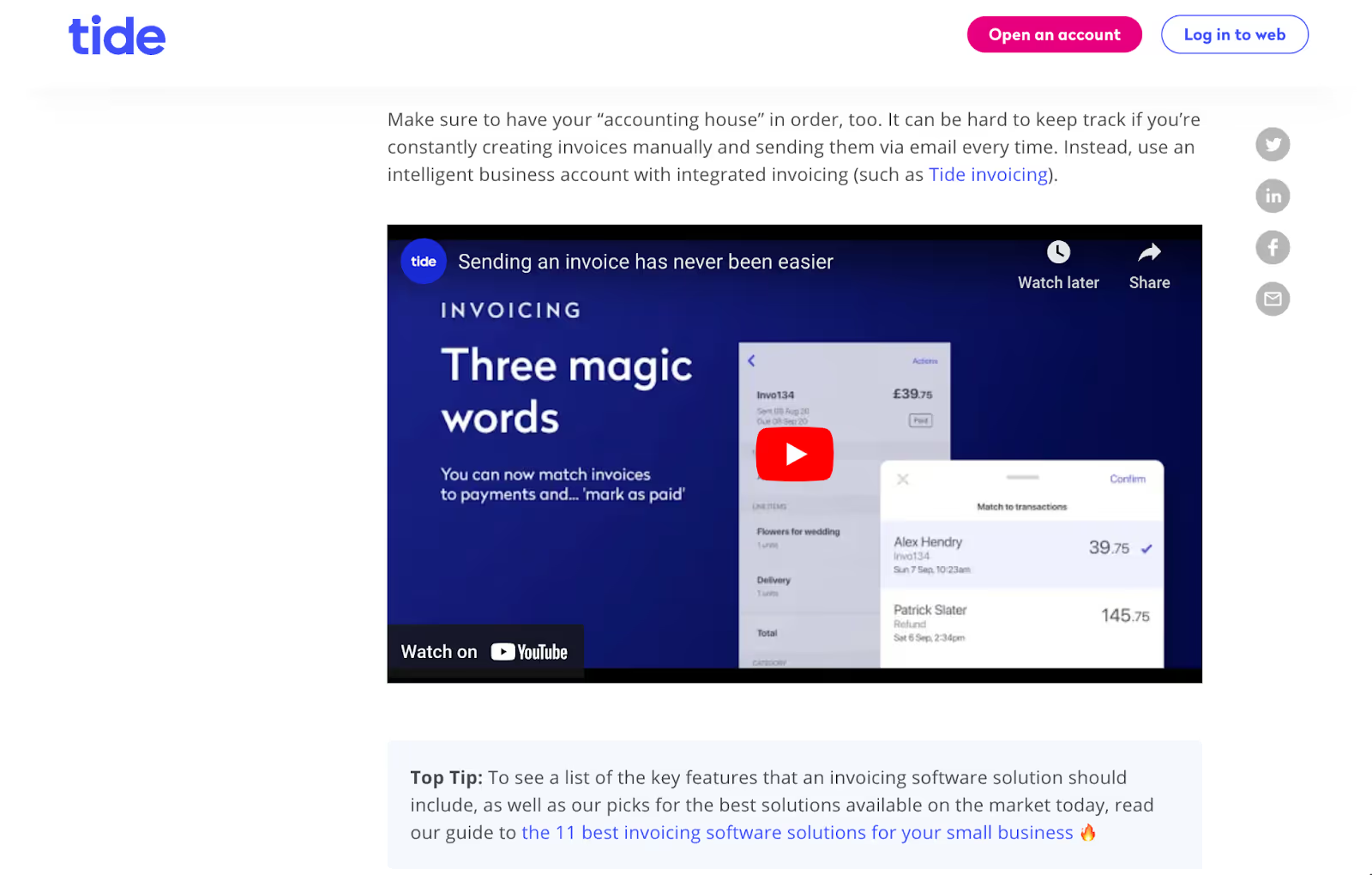
Here’s how to conduct BOFU content topic ideation:
Interview your customers
Customer interviews will uncover insights to improve your messaging and help you understand:
- Which problems you help customers solve
- Why they invested in your product
- What positive and negative experiences they’ve had
The key to effective customer interviews is to a) be direct and b) ask good follow-up questions.
This is where you’ll find their true motivations and insights you can act on.
Here are some examples of initial and follow-up questions. We've based these on hypothetical customer responses for an asynchronous meeting platform:
From these initial and follow-up questions, you might learn:
- Customers choose you over competitors because you keep meetings organized and on track.
- Teams are able to spend more time on deep work and implement a four-day workweek.
- Automated minutes would allow teams to clearly communicate and stay present during meetings.
- Customers send voice messages over video because they feel it’s easier to hit record. They don't have to worry about their appearance.
- Screen sharing isn’t a priority because Loom offers a best-in-breed solution. Customers would rather see an integration.
Take these insights and use them in your BOFU content. Be open to critical feedback. You’ll discover ways to improve your content and messaging.
How we'd use these insights to create content for clients:
Using the responses above, we could write a “Zoom comparison article.”
If we were writing it for them, it would emphasize that it helps customers save time and improve productivity as key differentiators.
We’d even share how one customer implemented a four-day workweek—all thanks to the number of hours saved.
This would position them not just as a meeting tool, but as a way to improve remote working cultures.
Customer interviews allow you to collect feedback from your customers. You can ask follow-up questions and understand their trust motivations, challenges, and goals.
You can also send email surveys—like Miro have done here:
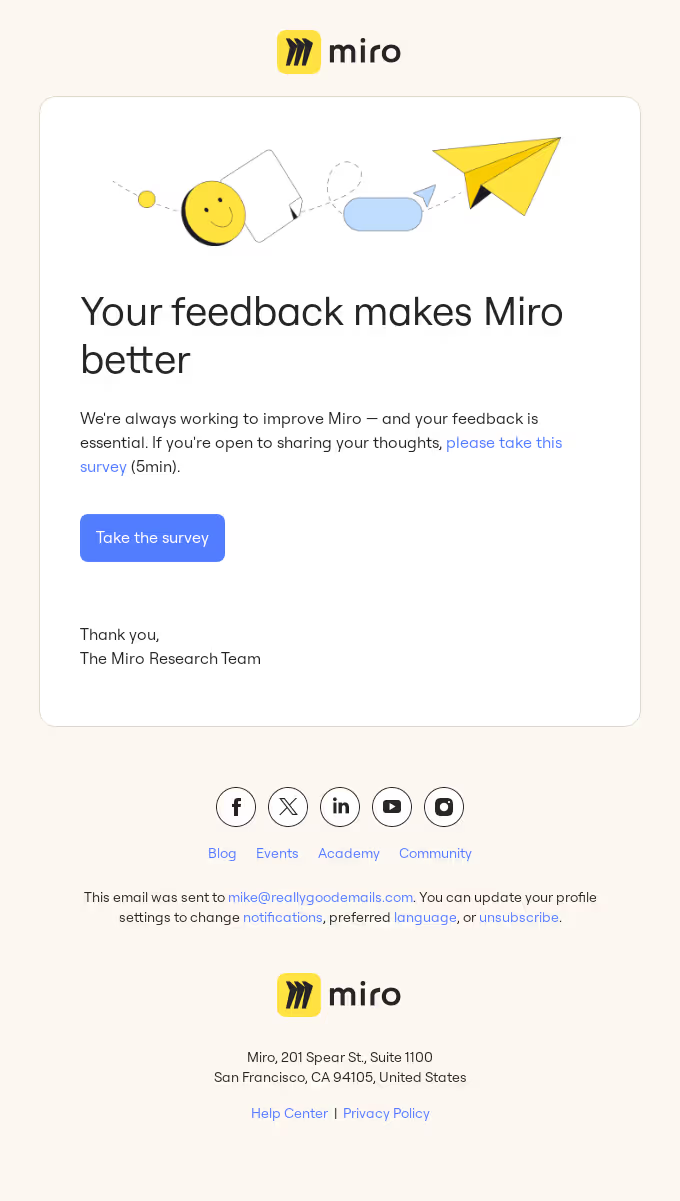
Collaborate with sales and customer success teams
Customer success and sales teams talk to your customers on a daily basis. They have their fingers on the pulse of common challenges and goals.
Use these insights to eliminate friction from the conversion and onboarding process.
Look to customer support tickets and forums, as many users go here first to find answers.
For example, this ClickUp article teaches readers how to manage large amounts of content:
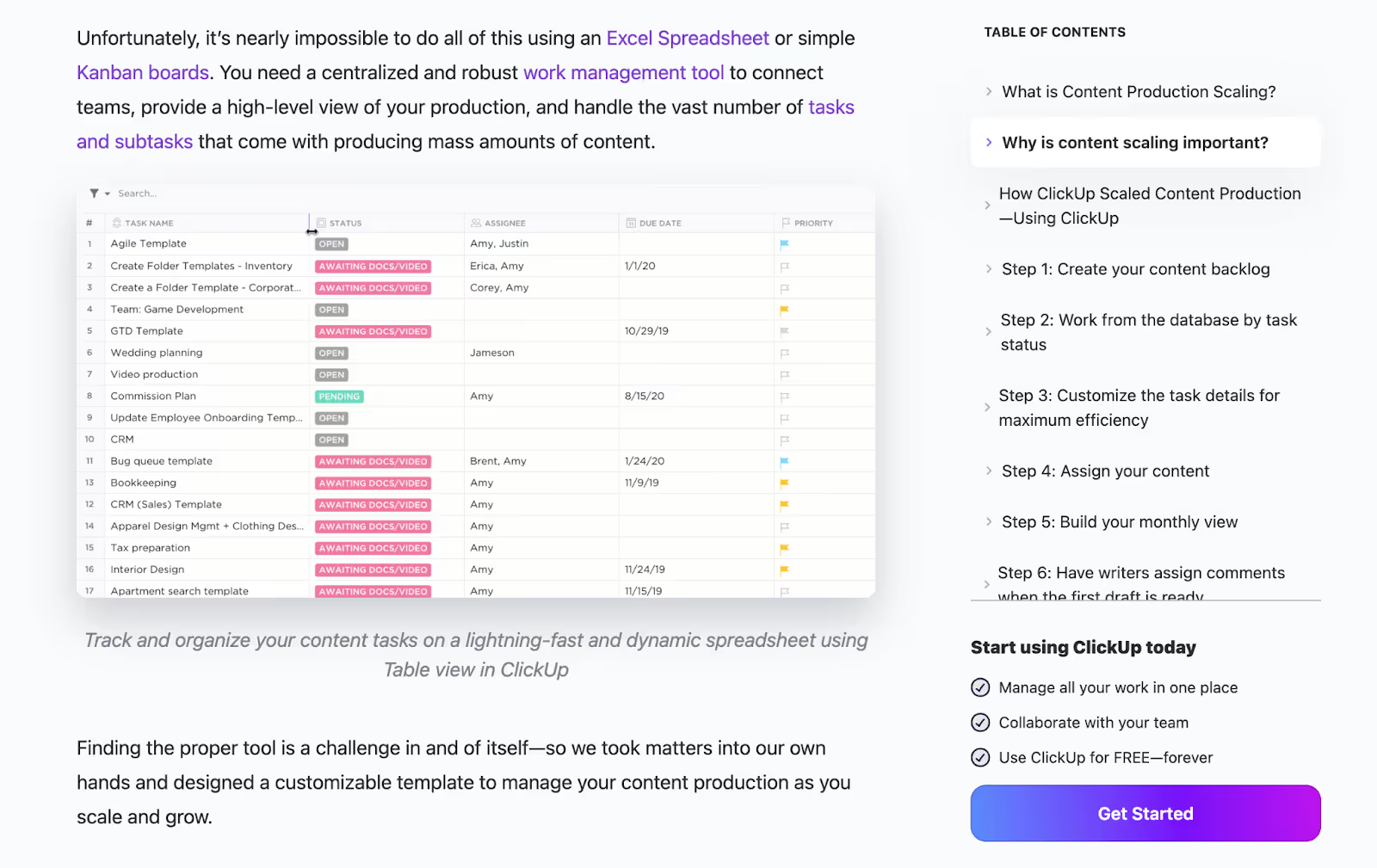
It shares a system for scaling content production—a common use case shared among ClickUp users.
Regularly meet with your sales and customer success teams. Uncover questions customers ask before and after investing in your product or solution.
Find out:
- Which product features have the most usage?
- How do prospects compare you to competitors?
- What features are customers rarely interested in?
Your BOFU content must answer these questions and overcome objections.
Here's how HockeyStack addresses user challenges in its Can You Dashboard It? series:
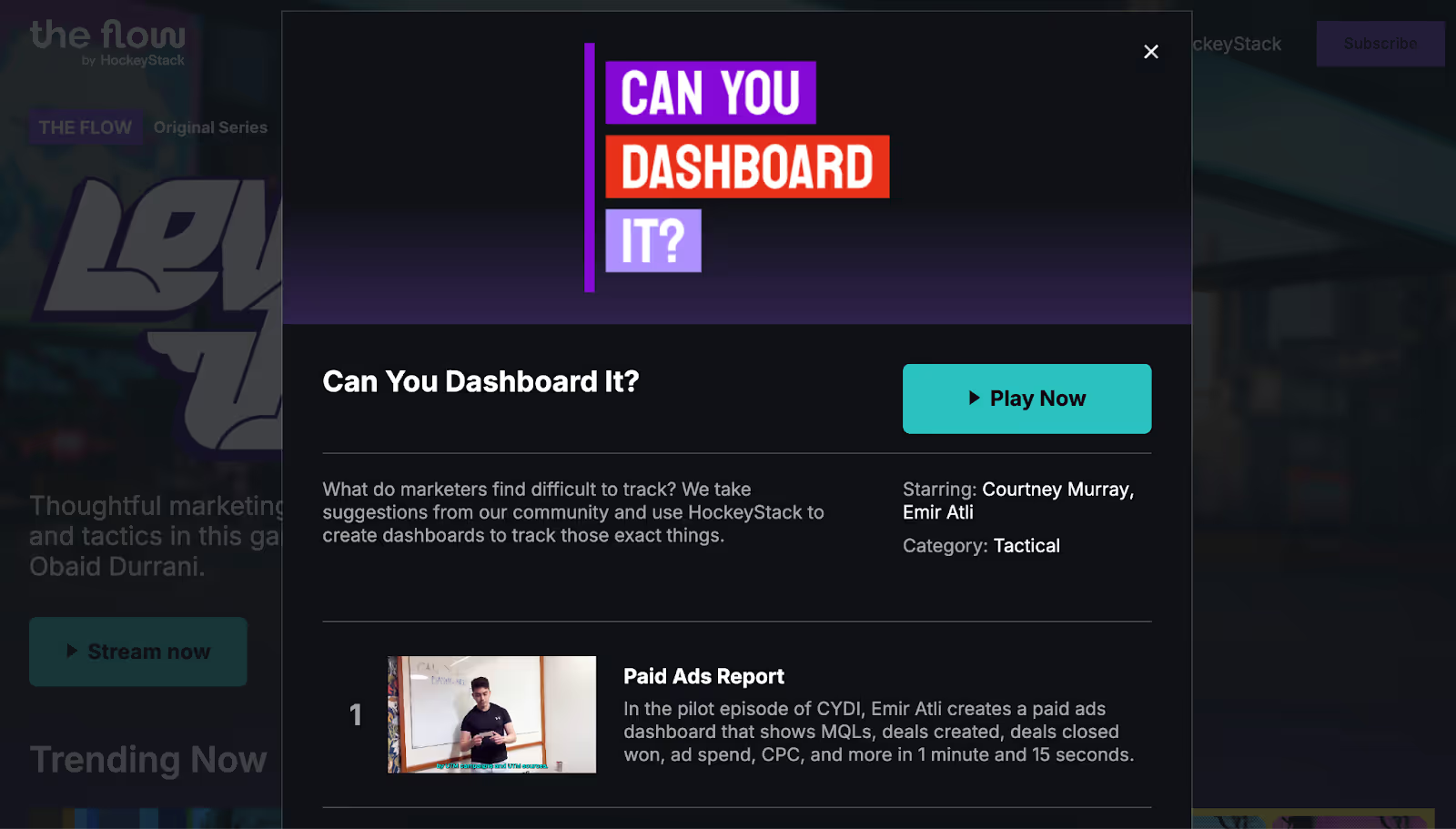
The team shares how to create ad tracking and sales dashboards.
It shows users how to measure impressions and sales activities using their product.
Essentially, the series teaches potential HockeyStack customers how to solve their biggest problems. It's an educational and entertaining series of product marketing materials.
Make it easy for customer-facing teams to share their observations and objections.
Create a dedicated Slack channel or spreadsheet to keep insights organized and accessible.
Run a competitive analysis
Analyze how your audience talks about your competitors. Use this insight to create strong positioning and differentiation.
Use reviews, communities, and support forums to find out what questions they're asking.
What are they saying in G2 and TrustPilot reviews? What objections and complaints do they have?
For example, here’s a response to a Reddit post asking HubSpot users about their biggest problems with the software:
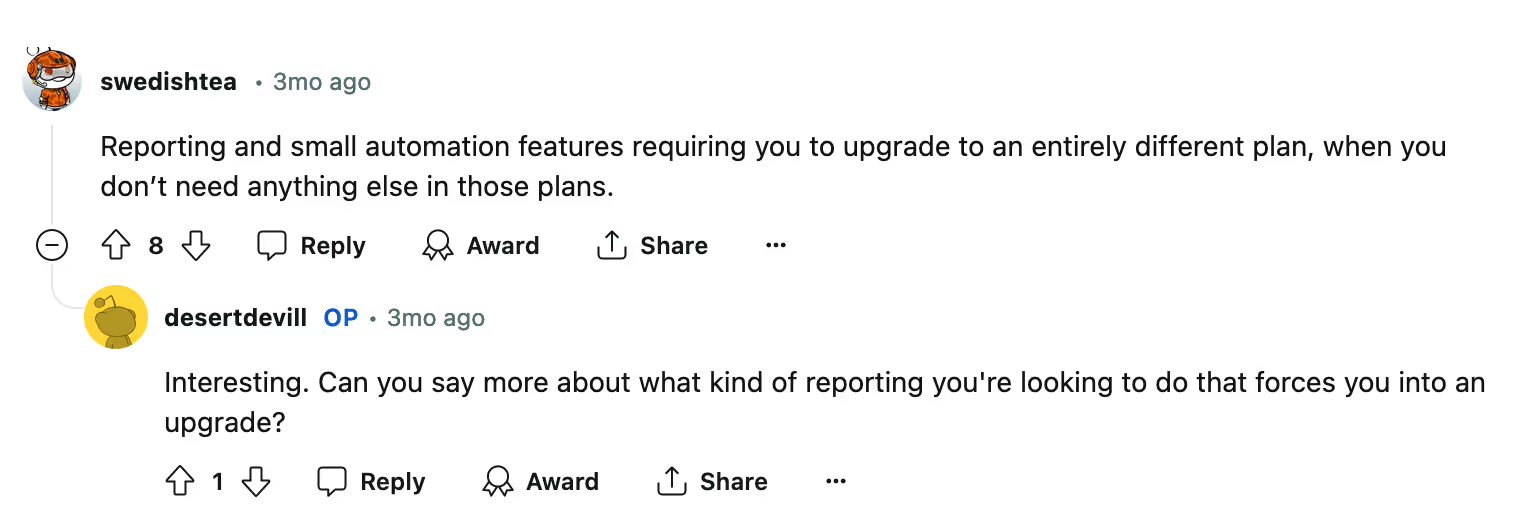
Pricing is a common issue in this thread, their customer base feels it as a whole.
A competing CRM could create a comparison page to show how it fills these gaps. Here’s one we created for Pipedrive:
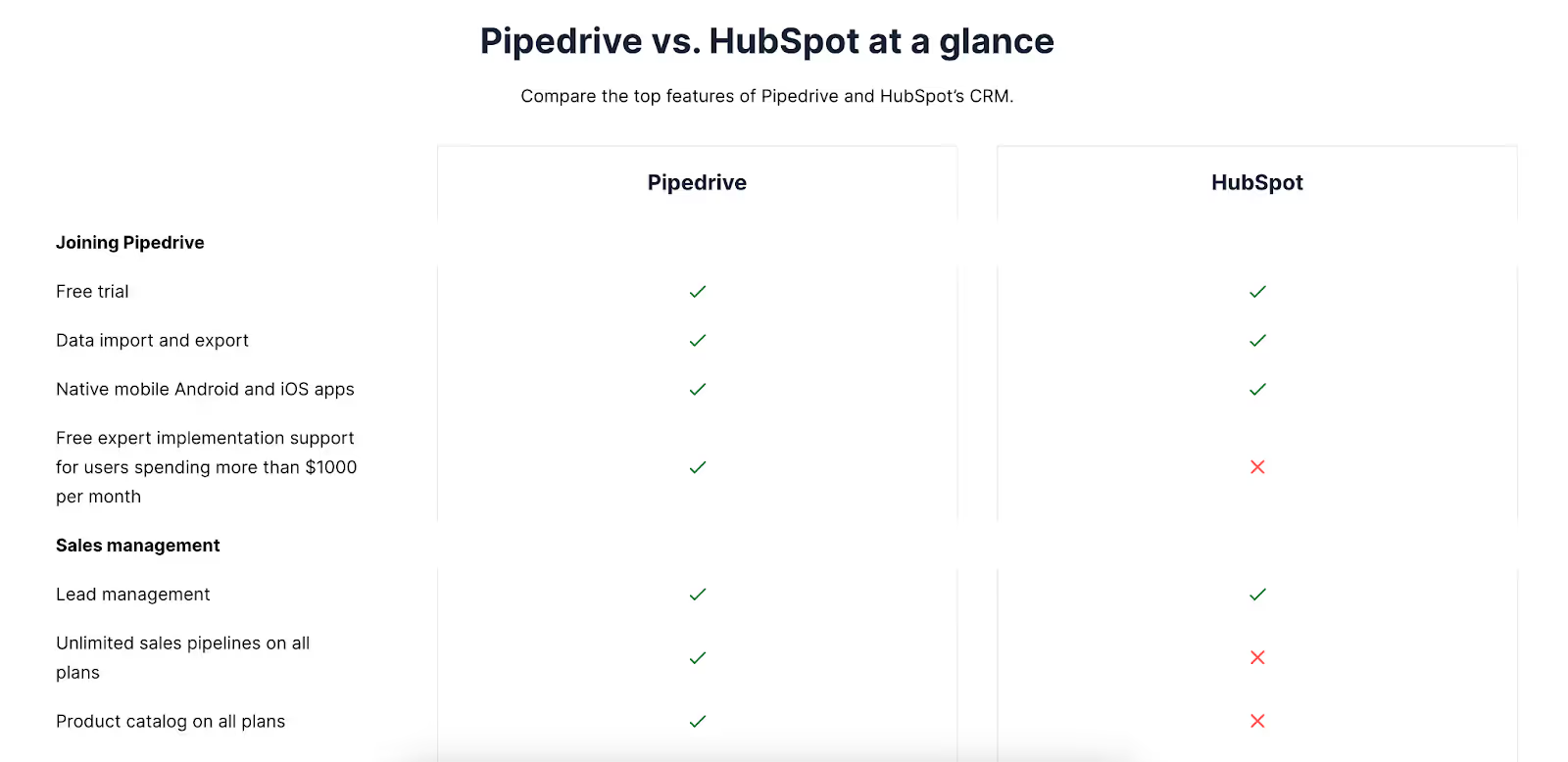
Your competitor analysis might uncover pain points you weren’t aware of. Use these to fill gaps in the market with your BOFU content.
For example, this Reddit post expresses confusion around Notion' digital asset management capabilities:
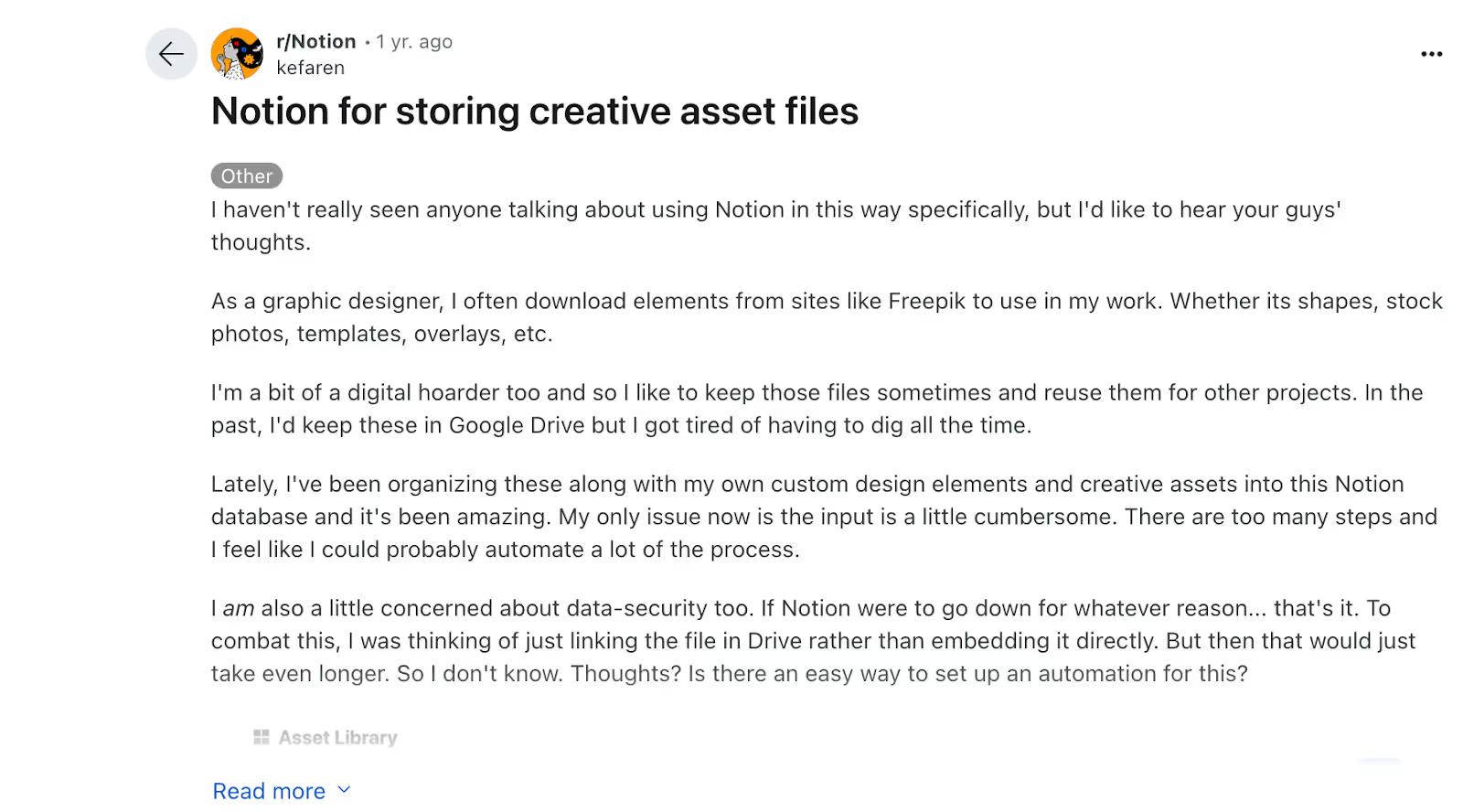
As an indirect Notion competitor, Airtable wrote an article that teaches an easier way to build one:

Conduct BOFU keyword research
Optimizing your BOFU content for SEO gets your message in front of potential customers.
BOFU keywords indicate a high intent to invest in a product or service. This includes queries including words like “vs” and “pricing” or “demo.”
Here are some BOFU keyword variations for a SaaS brand:
- best [product type] software
- [product name] free trial
- [product name] demo
- [product type] for [role]
- [product type] for [industry
- [brand name] pricing page
- [brand name] vs. [competitor]
- how to [do a thing] with [product name] (also known as JTBD content)
- [competitor name] alternative
For example:
- best project management software
- crm for real estate
- Notion vs. Airtable
- how to create a marketing report
These are search terms used by in-market buyers who are problem- and solution-aware. They might be close to making a buying decision, as indicated by the search engine results page (SERP)
Here are the results we get for the term “best project management software:”

Product listicles indicate that searchers are learning about and evaluating their options.
We use the word “best” in the above keyword list loosely. “Best” could mean any combination of specific features and needs unique to your audience’s criteria.
If keyword research is new to you, HubSpot's guide is a solid starting point.
For now, here’s a workflow specific to finding BOFU keywords:
- Brainstorm relevant terms. Based on your customer interviews and research, identify terms your audience searches when they’re ready to take action.
- Validate demand with a keyword research tool. Put these terms into a keyword research tool like Semrush or Ahrefs to measure demand. Uncover other related keywords using “Terms Match” in Ahrefs or “Keyword Variations” in Semrush.
- Build your keyword clusters. Organize terms that fulfil the same search intent (i.e. have the same results in the SERPs). This helps you maximize results by getting a complete picture of the demand for a topic.
- Analyze search intent. Look at the SERPs for your keywords to commercial intent. For example, if the SERPs for a topic contain product listicles or landing pages, it’s likely that users are researching their options.
- Prioritize ruthlessly. Focus on opportunities based on product relevance, search volume, and brand competition. Prioritize keyword clusters that align with your offering and target audience.
- Test and iterate. Continuously measure performance by monitoring rankings, search visibility, engagement metrics (such as avg. time-on-page), and most importantly, conversions.
Your BOFU content must drive business results. Trials, demos, sales-qualified leads (SQLs), or revenue should be your north-star metrics.
When in doubt, follow the EPIS model: experiment, pivot, iterate, and scale.
7 bottom-of-funnel content types (with examples)
Your chosen BOFU content formats will depend on search intent, customer needs, and goals. Here are nine proven frameworks you can use.
1. Comparison pages (you vs. them)
Comparison pages pit you and your competitors against each other. It makes it easy for customers to compare the features of two solutions in a visual format.
For example, QuickBooks uses a simple table to compare features against Xero—one of their biggest competitors:
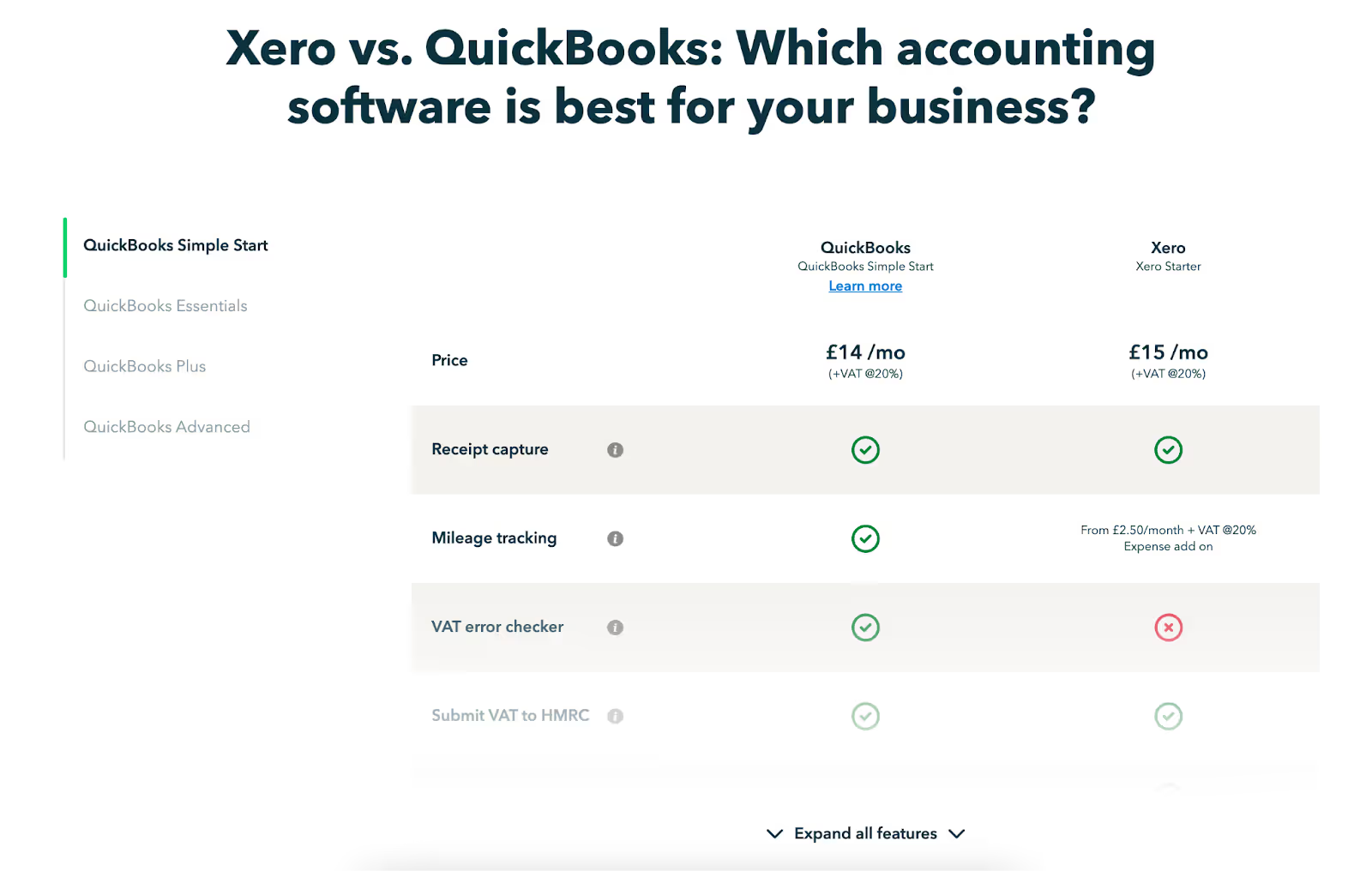
It allows users to quickly compare features when evaluating the two platforms.
And here, Shopify has created a page comparing them against WooCommerce. The four-column layout allows Shopify to lean into what makes them different:
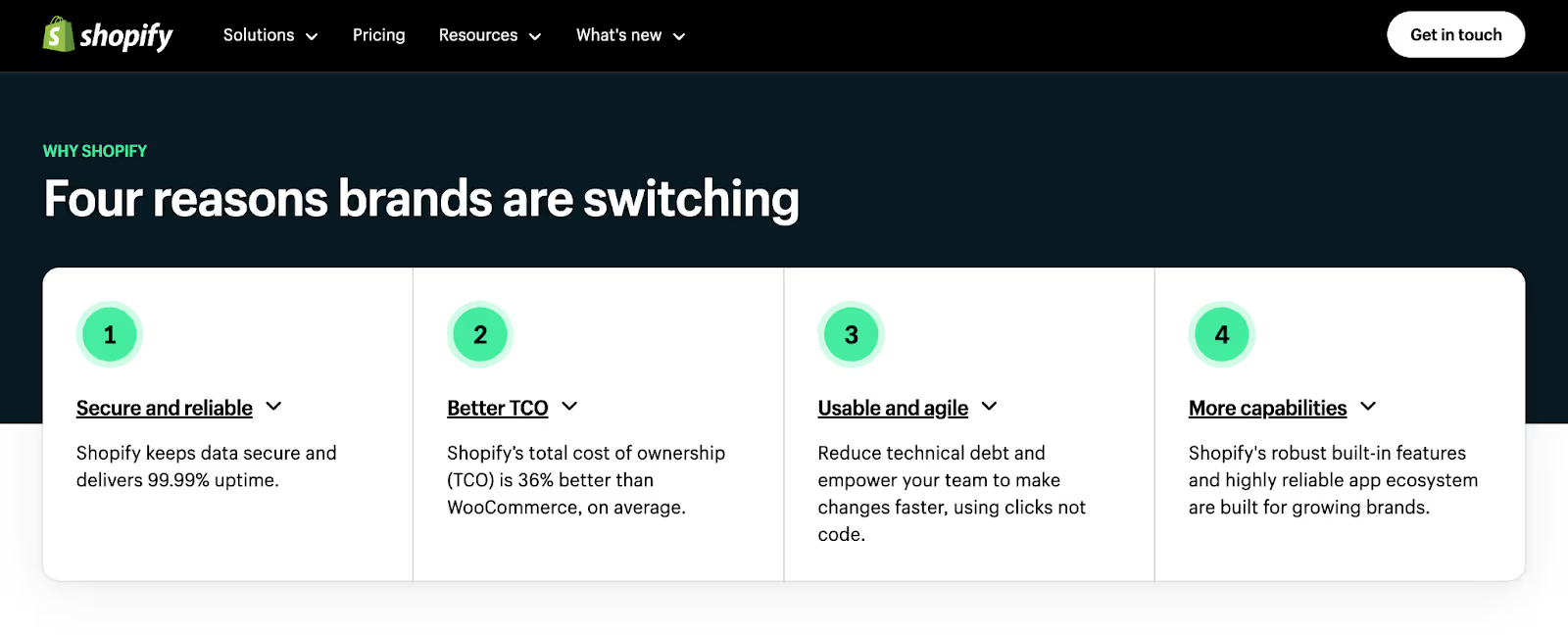
Tips for writing comparison pages:
- Lean into your product’s strengths, and don’t be afraid to talk about who your product isn’t for.
- Don’t misrepresent your competitors. This can erode trust and lead to cease-and-desist notices.
- Dedicate sections to the features and benefits that you offer and others don’t.
- Feature testimonials and case studies to build social proof. If you can find stories of customers who made the switch from a competitor, even better.
- Back up your claims with data. For example, average server uptime.
Be impartial and focus on attracting your best-fit customers. Demonstrate who you’re for and don’t be afraid to alienate people to attract your best-fit customers.
2. Product pages
Product and landing pages highlight the benefits of your solutions and features. They can also cater to specific audience segments, roles, and industries.
Take this product page we wrote for Pipedrive’s web forms feature (which generates over 400 visitors a month). It focuses on the features that customers care about the most:
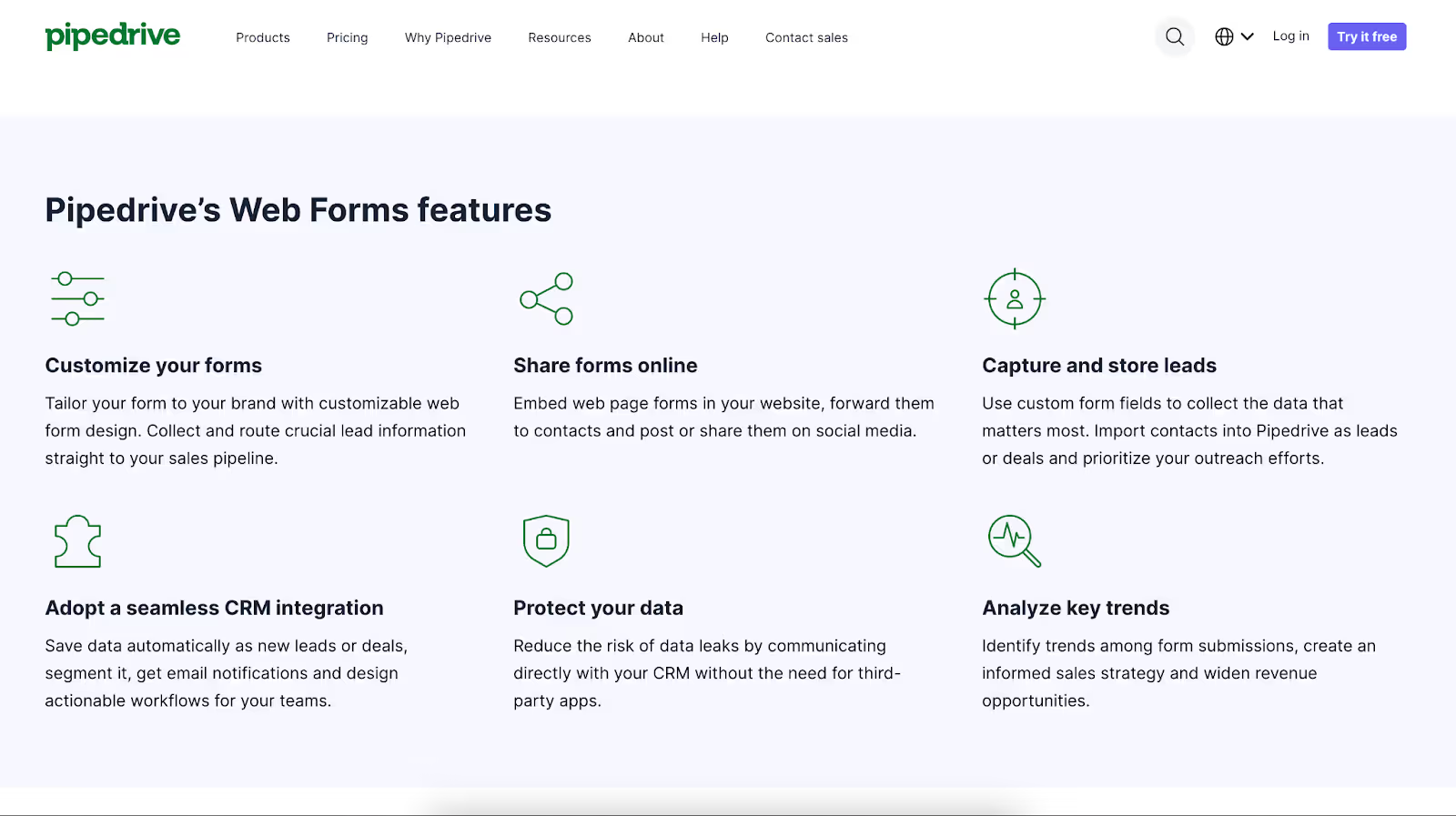
It also shares helpful information on what to look for in a web form tool:
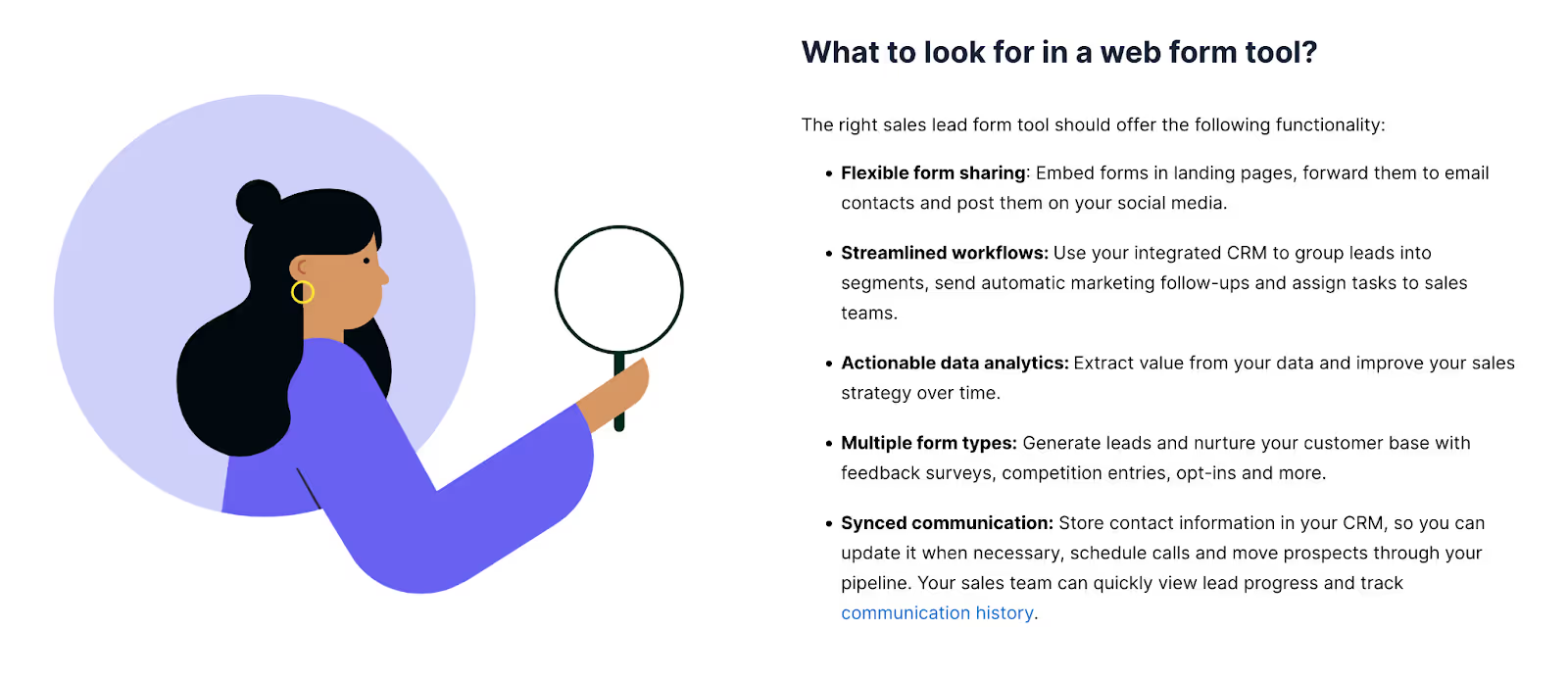
Tips for writing product pages:
- Dedicate full-width sections to the most important features and benefits.
- Edcate users by writing punchy copy using a framework like PAS or SCQA.
- Pair product features with benefits, outcomes, and your customers’ JTBD.
- Clearly state what your features help customers achieve.
- Use grid layouts (e.g. 3x3) to increase the perceived value of your product or features.
- Educate your readers on what the feature is and how to choose one.
- Reduce friction with step-by-step instructions on how to get started.
- Improve visibility by optimizing product pages for SEO.
Optimizing your product pages for search helps you capture new in-market buyers. To date, we’ve helped Pipedrive generate approx.
3. Alternative pages
Alternative pages offer lists of similar products to a particular brand.
For example, it's likely someone searching for “asana alternatives” is in the market for project management tools. They might also be an Asana customer looking to switch:

Tips for writing alternative pages:
- State what each tool is best for in subheadings and table of contents.
- Add a table at the top of the page to give readers a summary.
- Include additional content (definitions, how to find the best solution, etc.).
- Give your sections uniformity by including the same elements e.g. pros, cons, pricing, description, etc.
3. Best of
“Best of” pages offer lists of products and solutions in a specific category. The format is similar to alternatives pages, as they offer tools and solutions in a list format.
For example, this article from PandaDoc lists the top e-signature software platforms. It uses several of the principles shared with “alternative pages” above:

Tips for writing “best of” pages:
- Feature your product or brand at the top of the list for maximum exposure.
- Don’t be afraid to list your competitors. This will build more trust with users.
- Follow the same principles in the “alternative pages” tips above.
“Best of” pages are once of the best BOFU SEO content assets you can create.
Why? Because it gets your product in front of an audience who are at the early stages of the buying process. Use them to get into their consideration set.
4. Case studies
Case studies share the success stories of your customers. They build trust with your audience while allowing them to learn more from their peers.
At Grizzle, we follow a traditional case study framework:
- Challenge: Share the problem that your customer faced, and why they decided to invest in your brand.
- Solution: The specifics of how your product or solution solved their problems.
- Results: How you helped your customer achieve a specific outcome.
Like this content and SEO case study we produced with Tide:
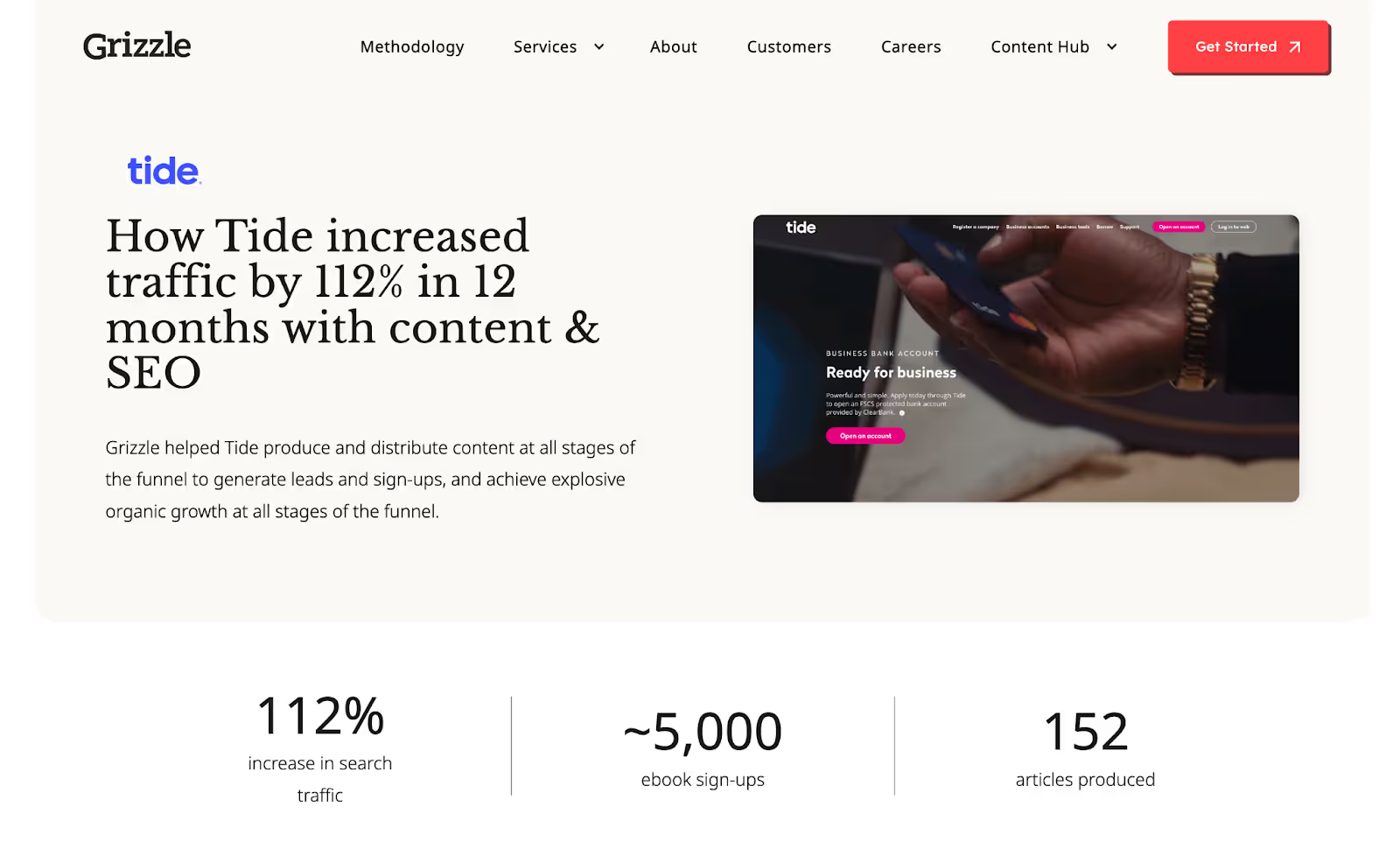
Tips for writing case studies:
- Feature a snapshot of results at the top of your case study.
- Include industry and business model to build social proof with similar companies.
- Add information that shares how you helped your customers.
- Include imagery and multimedia.
- Featured client quotes throughout the case study.
5. Ebooks
Ebooks are a long–form content format that offer huge amounts of value to readers. They're often used for lead generation in exchange for email and other information.
Despite their reputation, ebooks are still an effective form of content—when done right.
For example, this playbook from Madison Logic offers a system for creating an account-based marketing (ABM) motion:
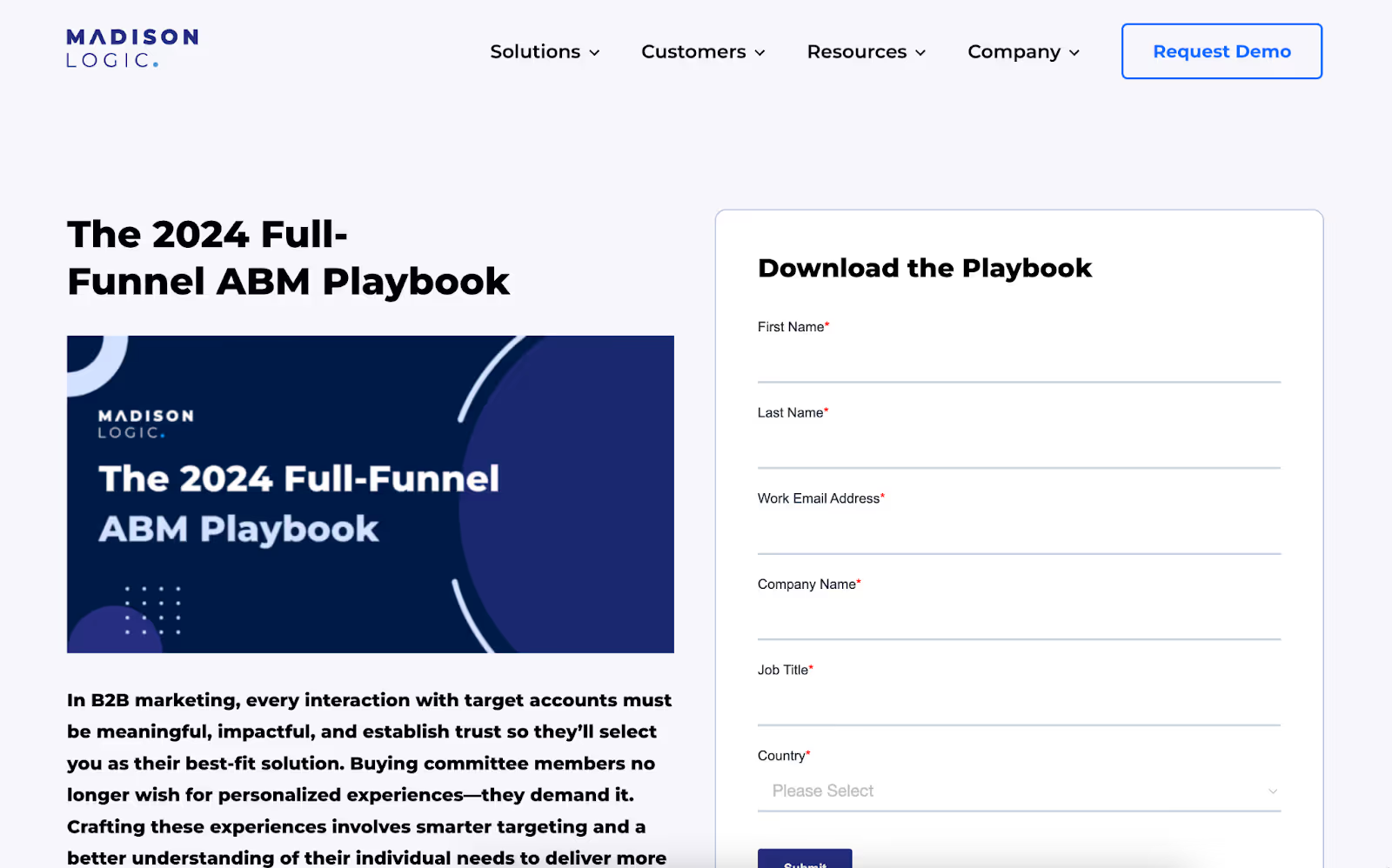
Readers have everything they need to get started with this marketing practice. From strategy and targeting to creating effective ABM content, it reveals the entire system.
Tips for creating ebooks:
- Don’t hold back on value. Give away plenty of guidance, examples, frameworks, and templates to make it worth your audience’s time.
- Make the reading experience delightful with good design.
- Pair your ebook with a high-converting landing page.
- Use email nurture workflows to further educate your audience.
6. Webinars
Webinars are online events where a host shares a presentation with an audience. They can be live, recorded, or evergreen.
Whichever format you choose, your webinars must be educational. And they must be relevant to your product or solution.
For example, this webinar series from Later offers social selling advice from other experts:
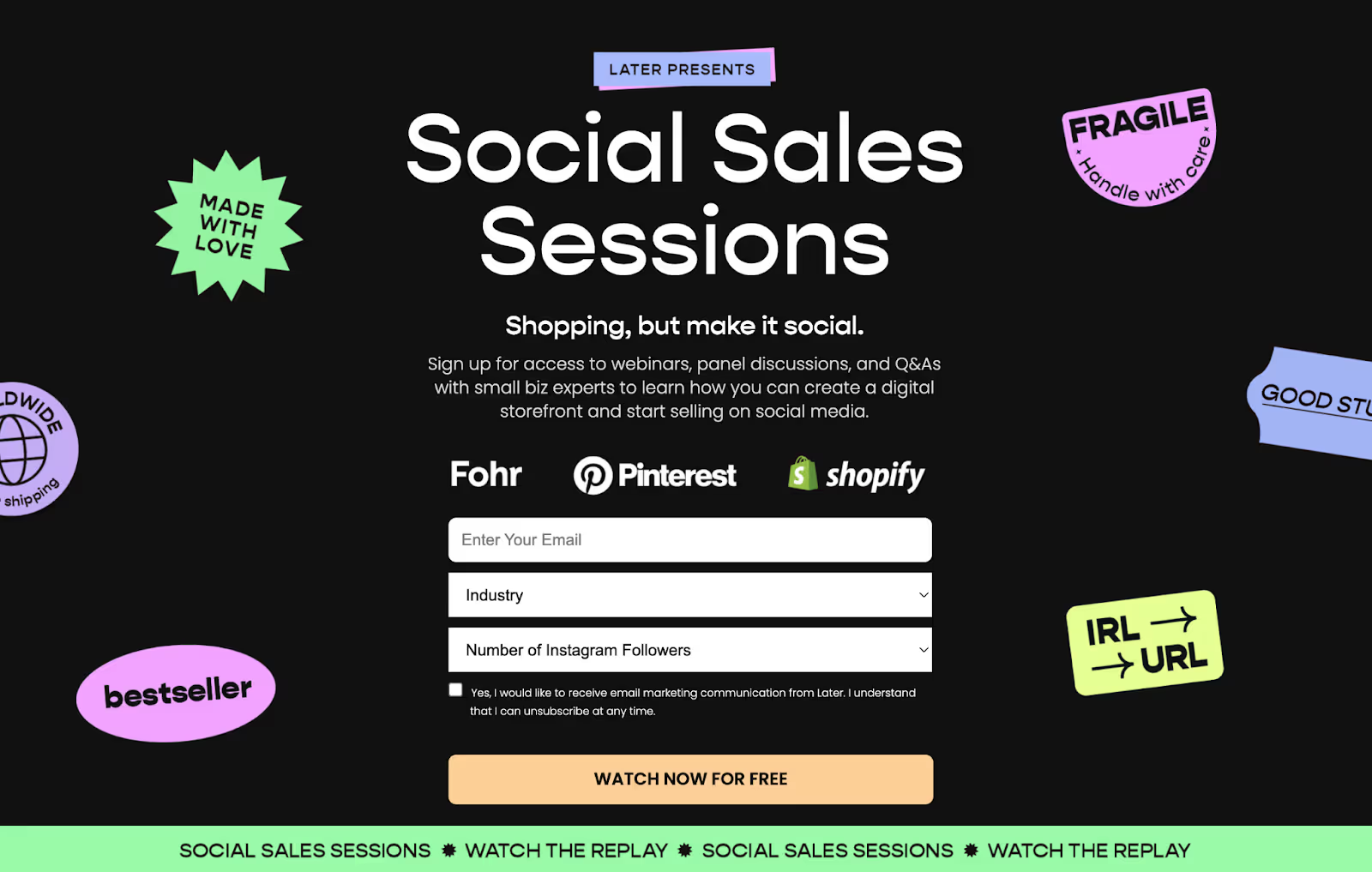
The series dives deep into a specific social selling practice, offering plenty of how-to advice.
Most importantly, many of the webinars teach attendees how to achieve their goals or solve problems using the Later platform. This makes them educational while mentioning features, increasing awareness of Later’s products.
Tips for running webinars:
- Partner with other experts and brands to reach a wider audience.
- Make your webinar a live event and let attendees interact with the host to increase engagement.
- Request questions from the audience before the live event.
- Record the webinar and allow users to access it later in return for their email address.
- Include a call-to-action at the end of your webinar to convert attendees into leads, demos, and users.
7. Explainer videos
Explainer videos are animated or live-action assets that communicate product features and benefits.
Here’s an explainer video we created for SmileBack’s CSAT feature:
It talks about a specific problem faced by SmileBack’s audience of MSPs before sharing the solution.
The video also shares step-by-step instructions on how to get started with the feature. This reduces friction for new users and shows viewers how easy it is to get started.
Tips for creating explainer videos:
- Get specific with the problems you solve. Kick the pain to hook users and keep them engaged.
- Invest in high-quality motion design, voice-over artists, and animation to establish credibility.
- Showcase product features and how they work with motion design.
- Use animation to tell a story and illustrate your points.
Generate more revenue with BOFU content
Bottom-of-funnel content drives customers to trust your business and make purchases.
It satisfies their search intent by positioning your solution as the perfect answer to their problems.
Talk to existing customers, spend time where they hang out, and study your competition.
Build a BOFU content strategy to address those challenges. Feature your product as the natural solution to your customer’s problems and JTBD.
BOFU content also helps you build topical authority relevant to your product.
Topical authority is an SEO principle where you become a go-to resource on relevant themes and categories in your space. Learn more about topical authority in our complete guide.












